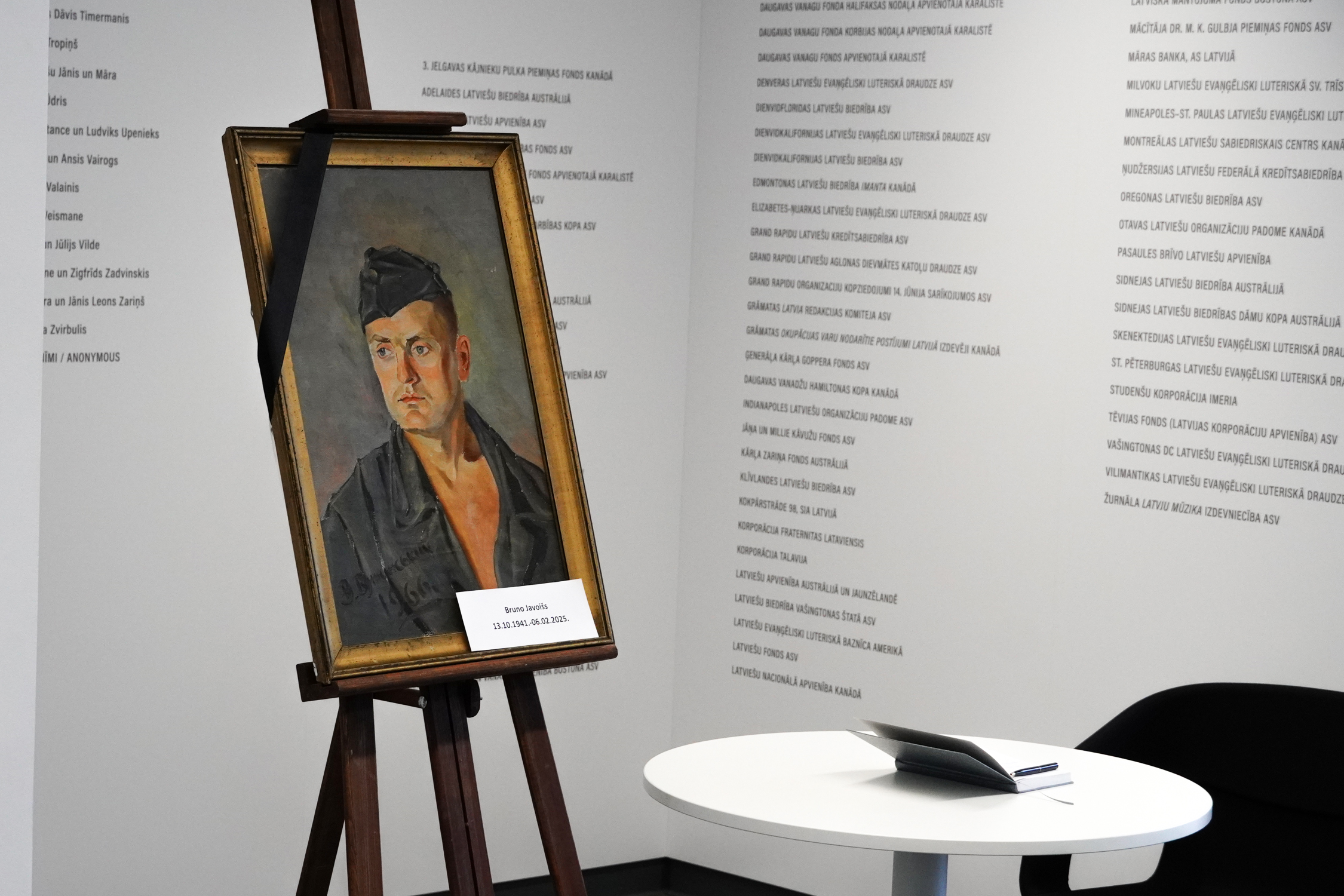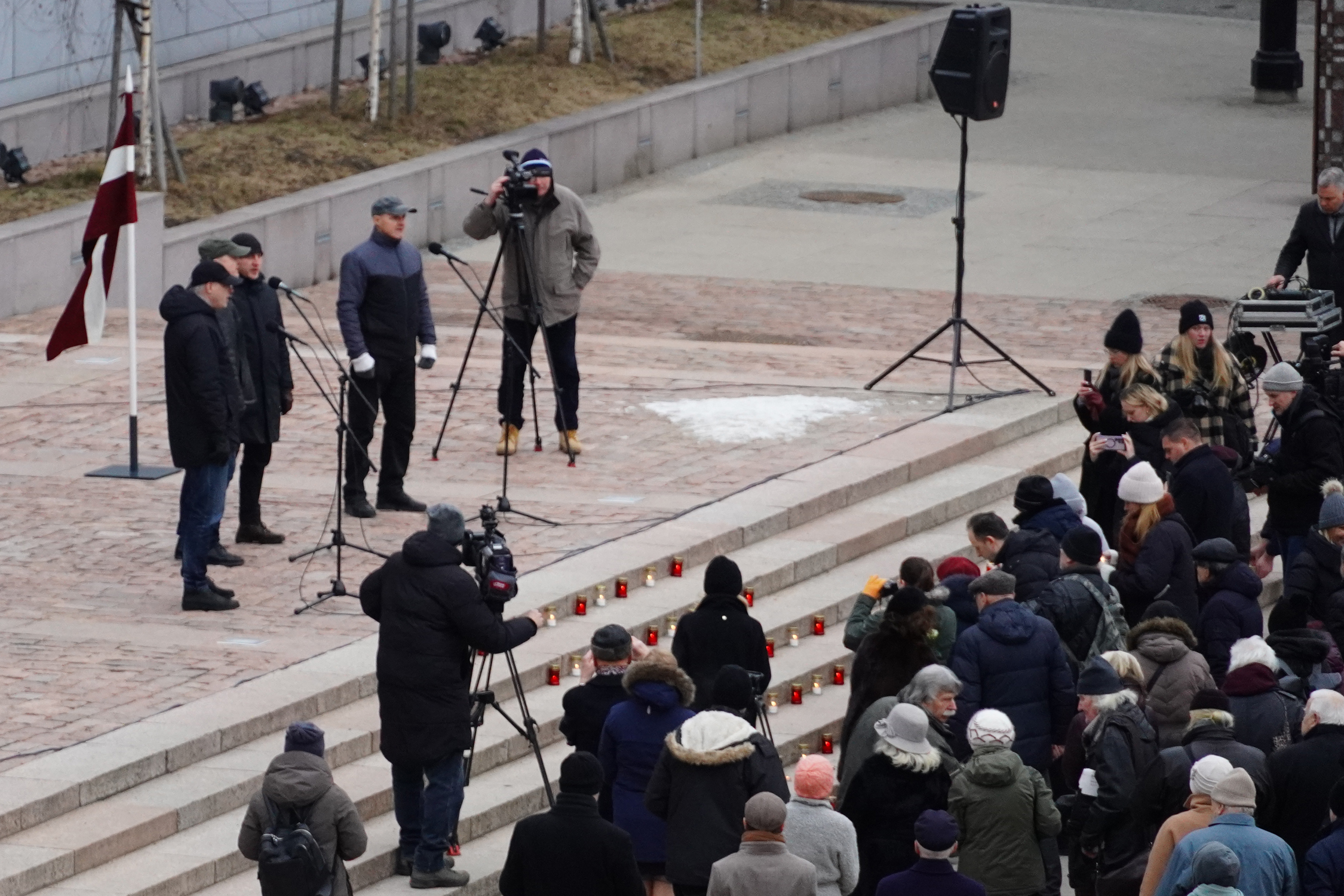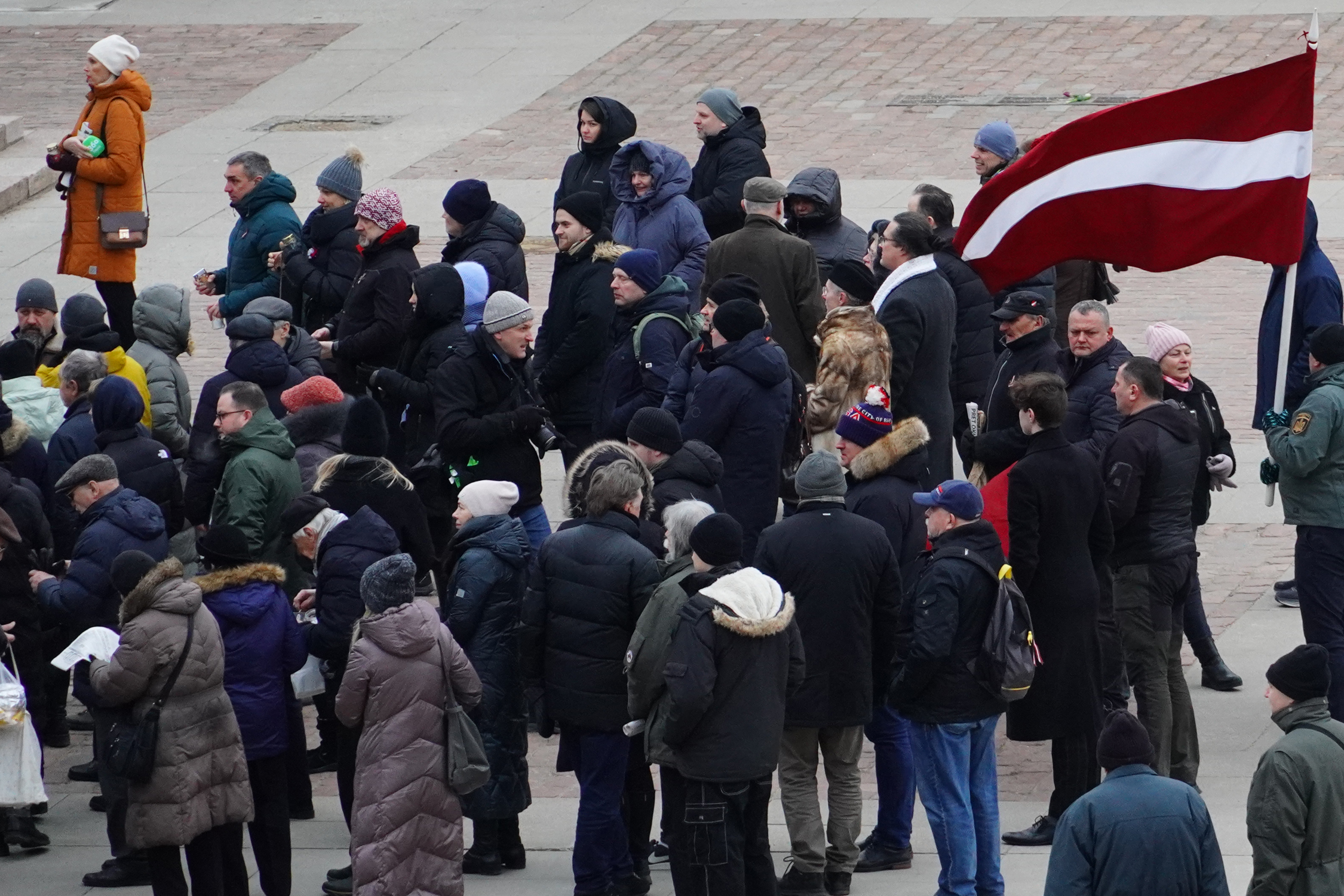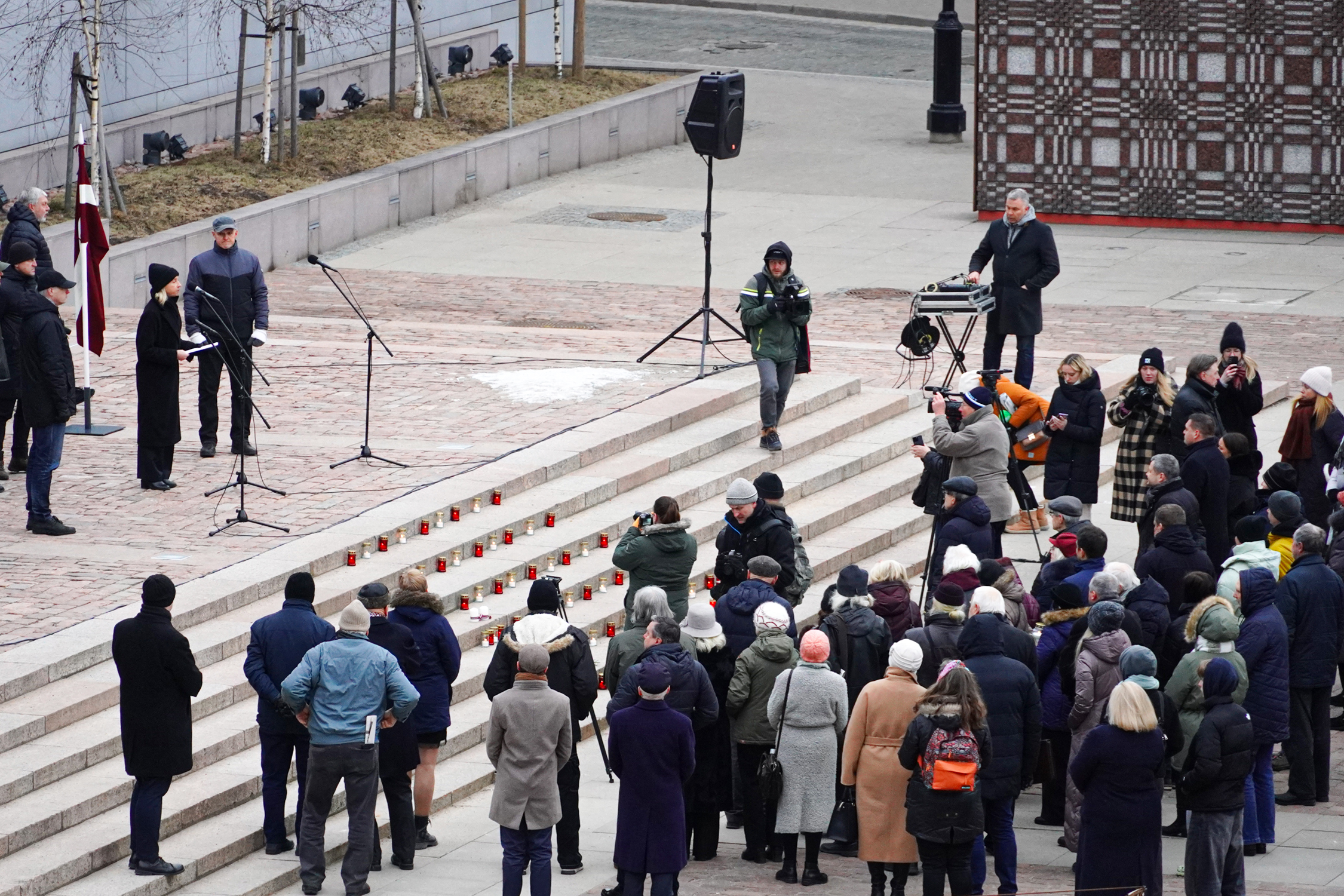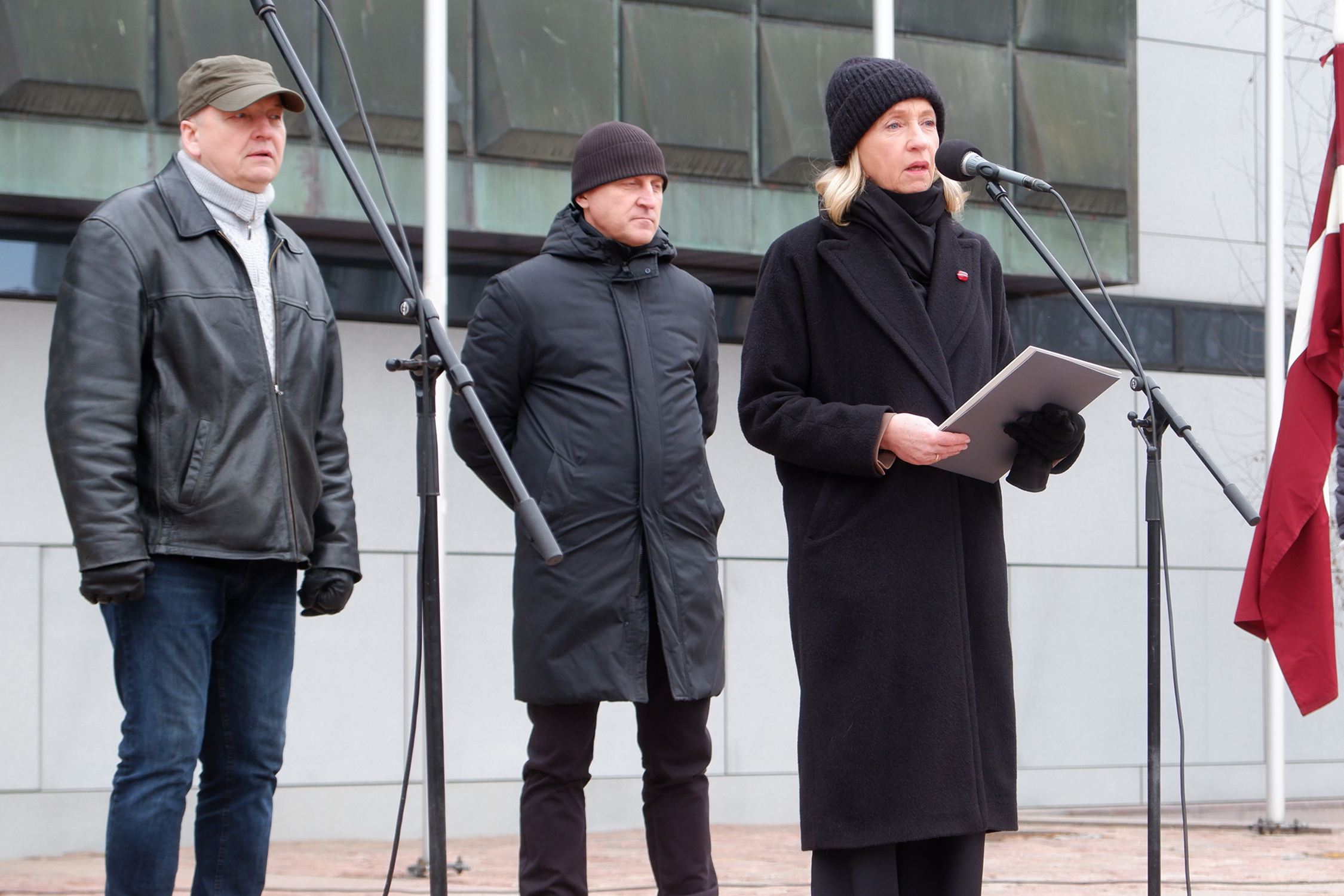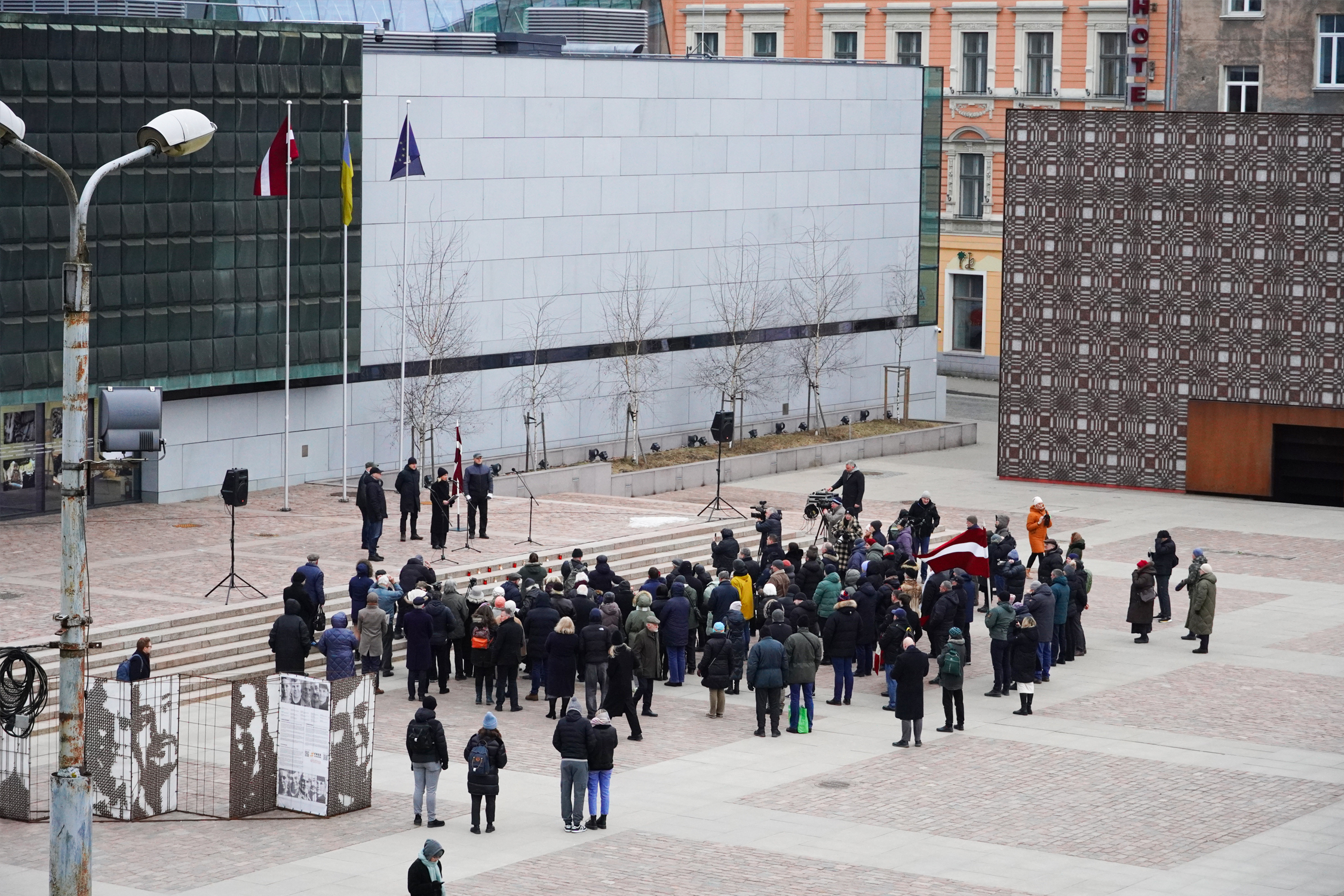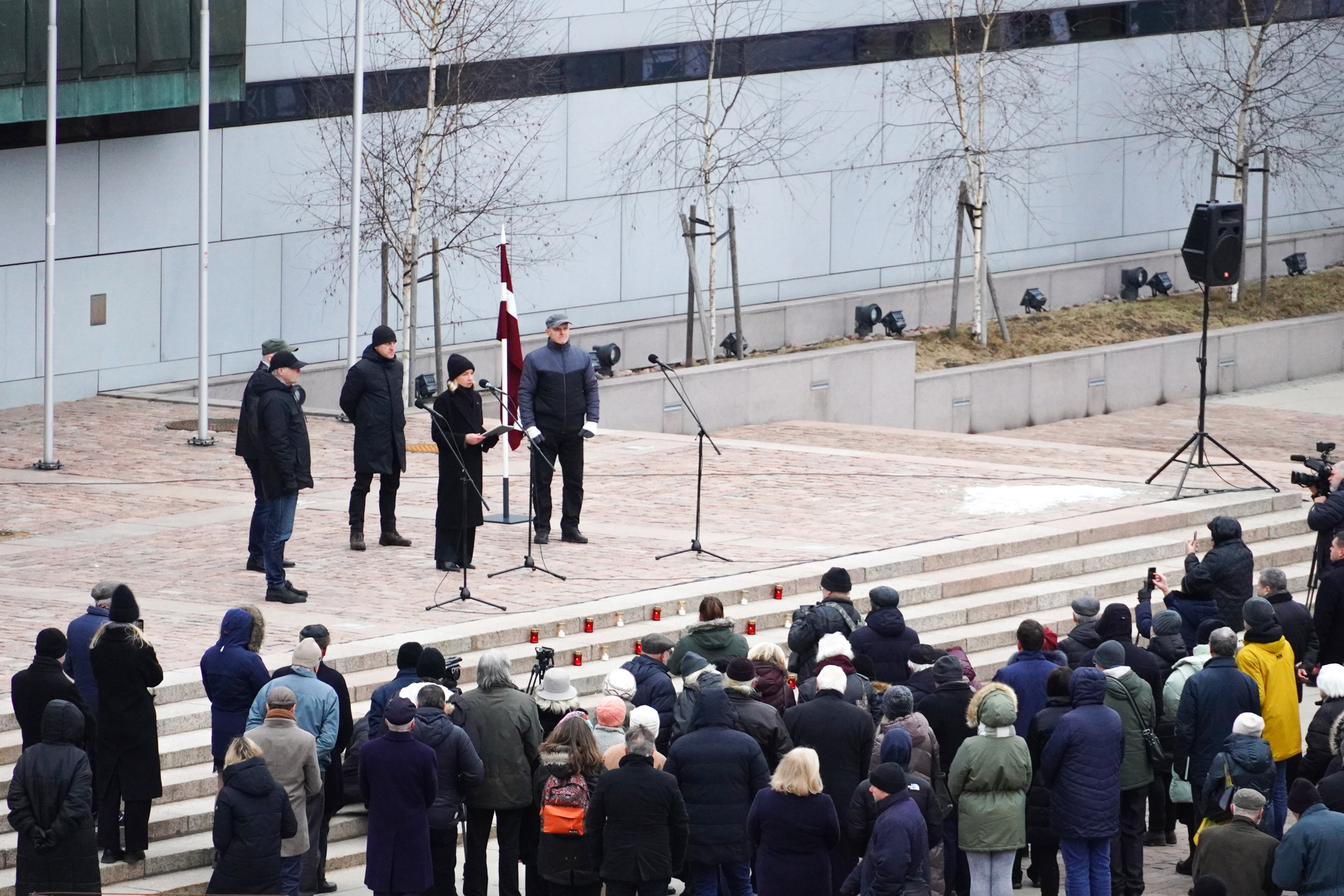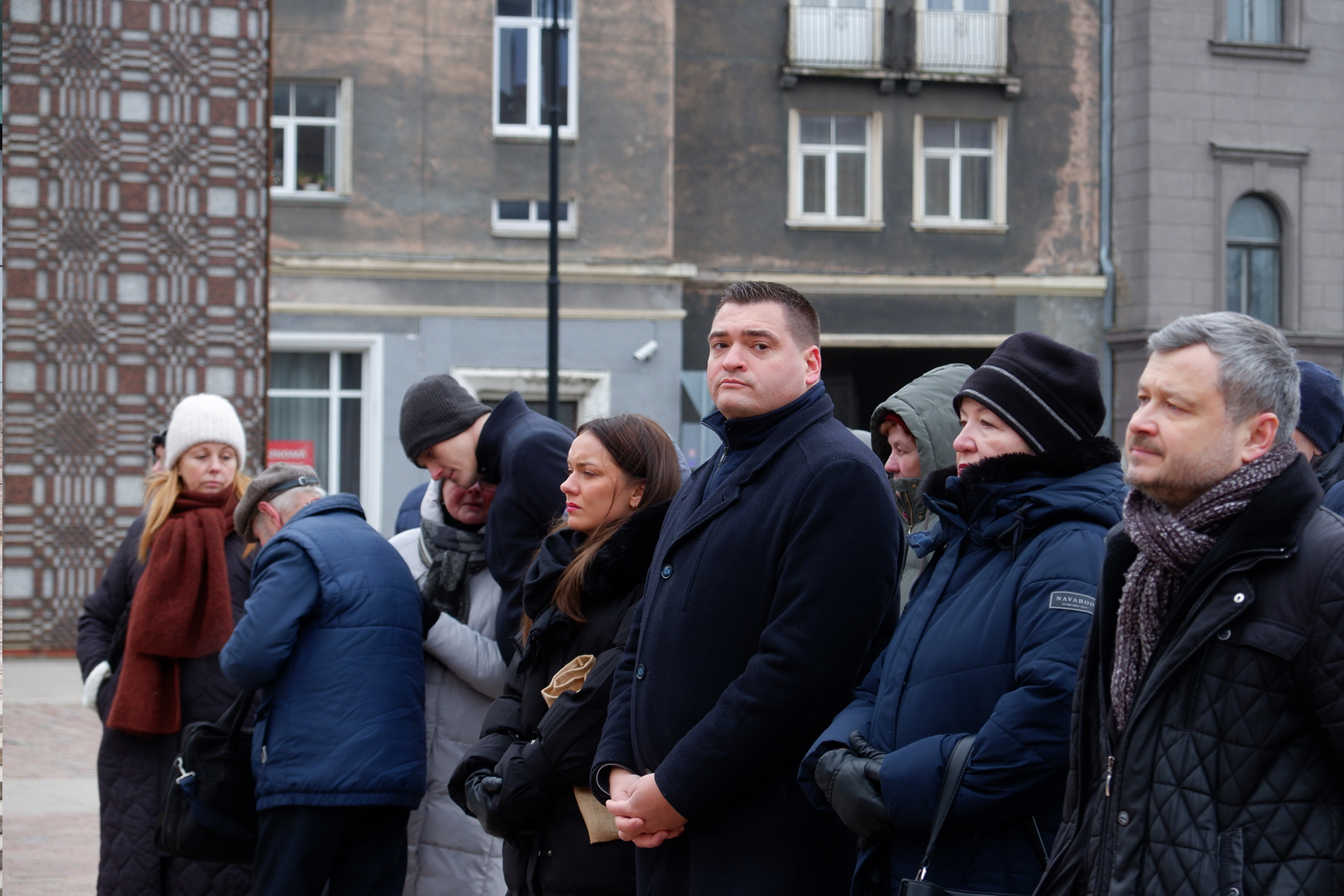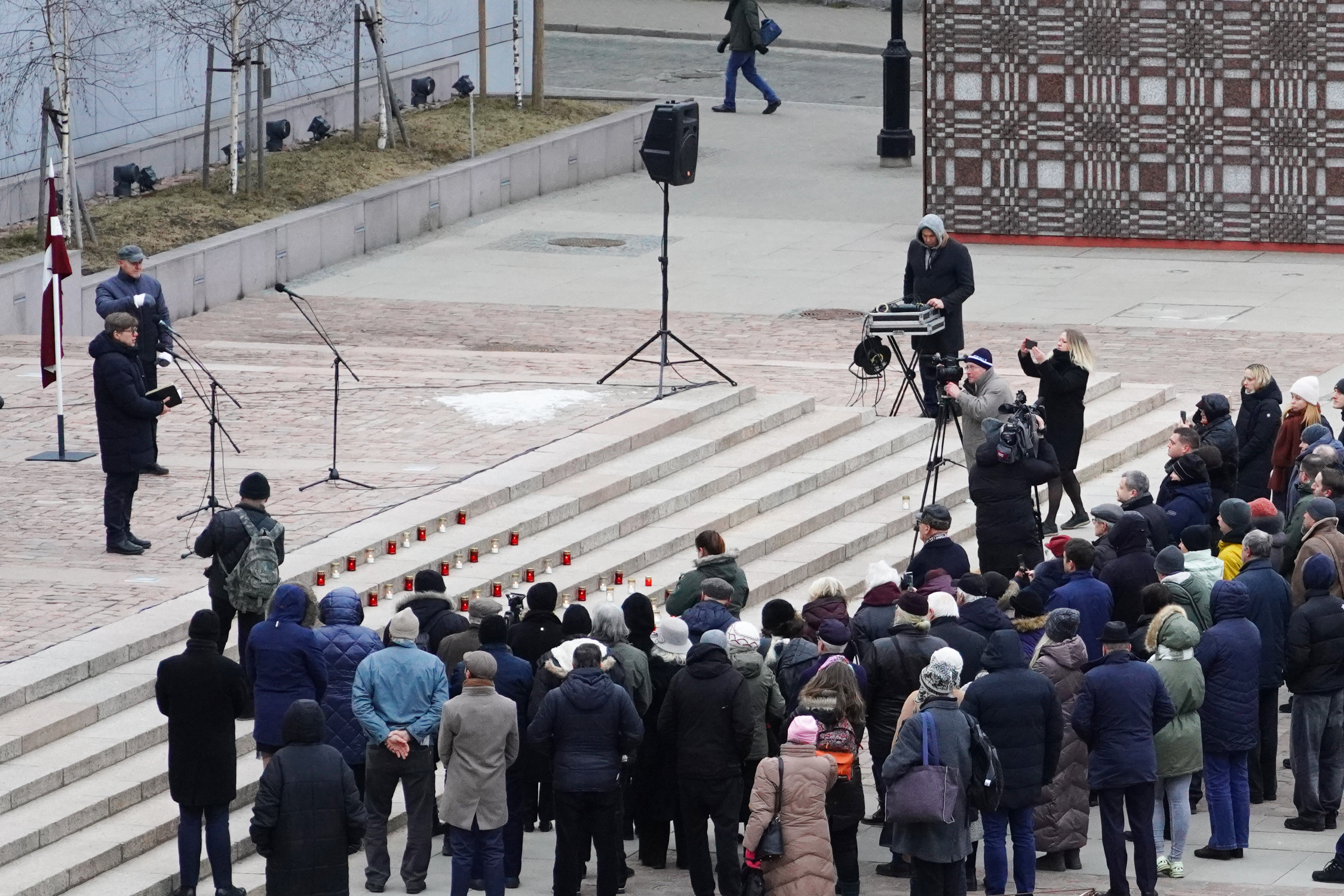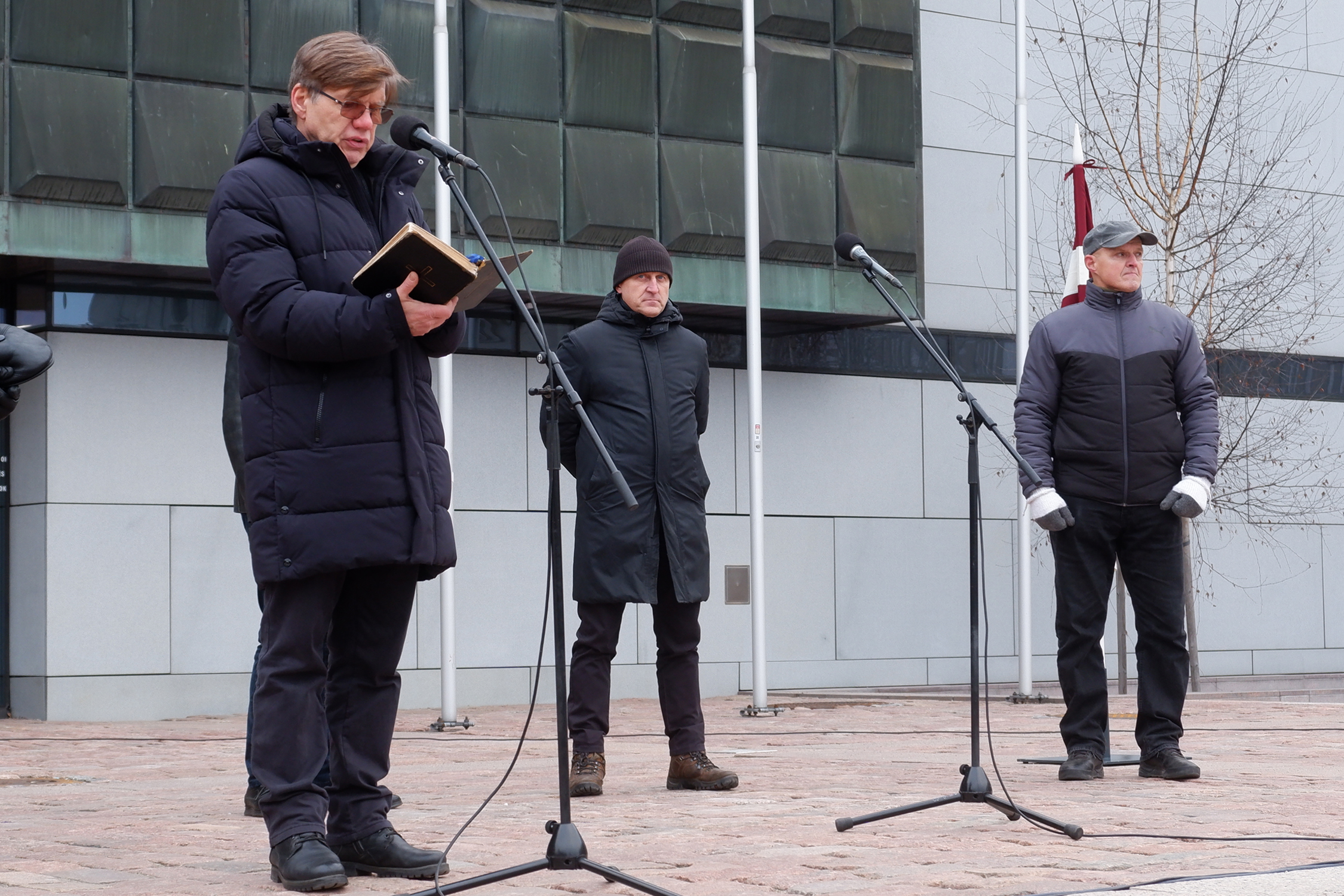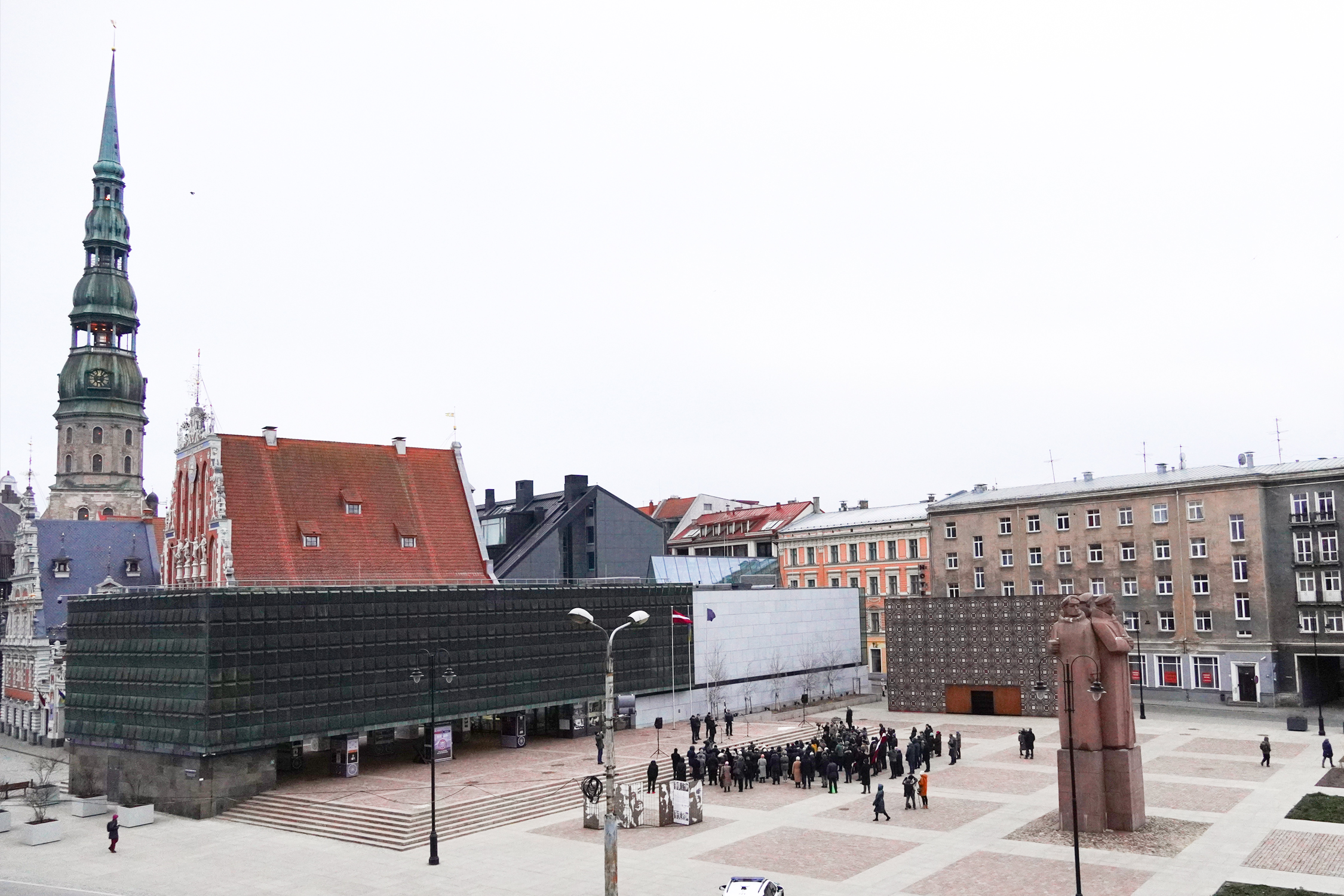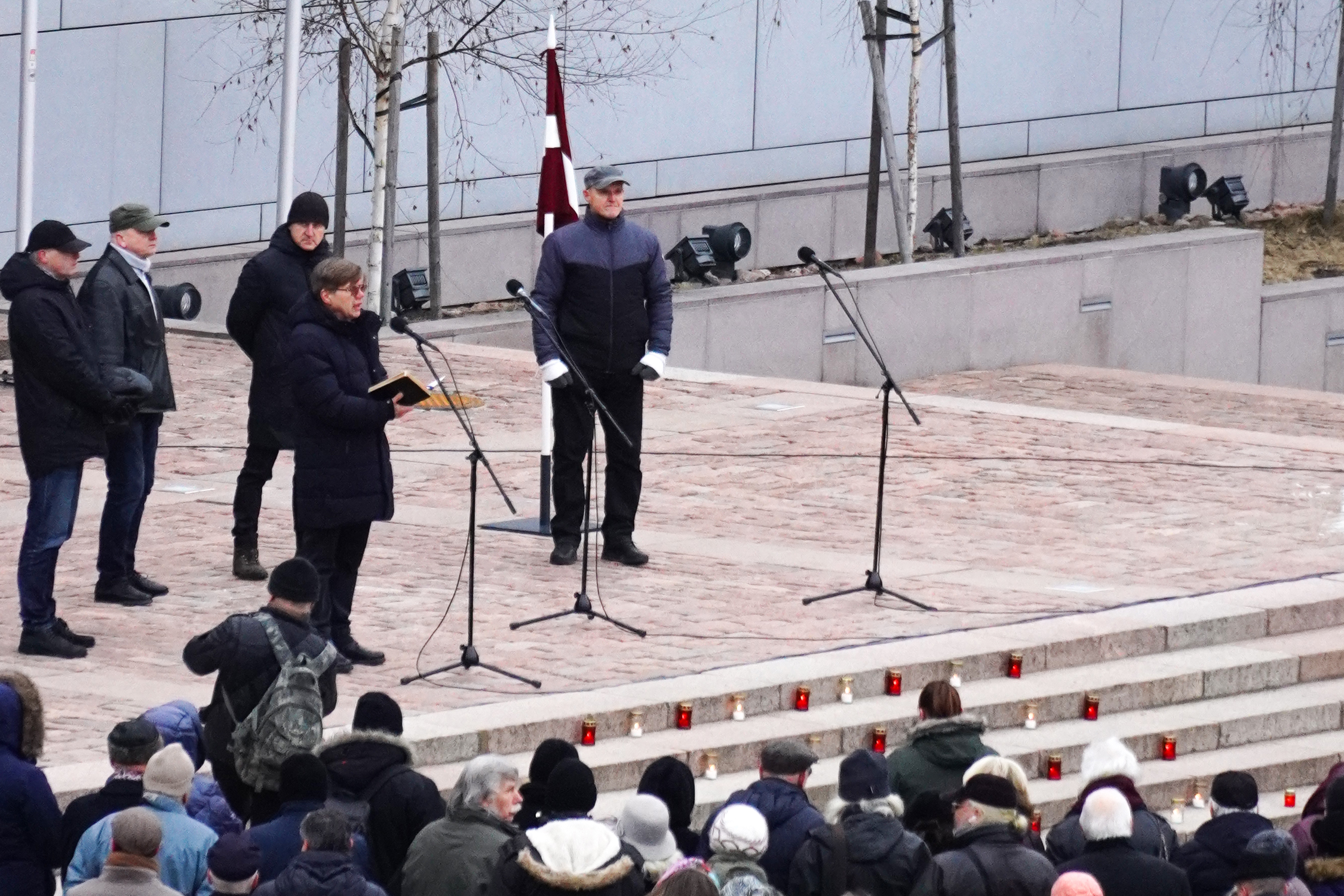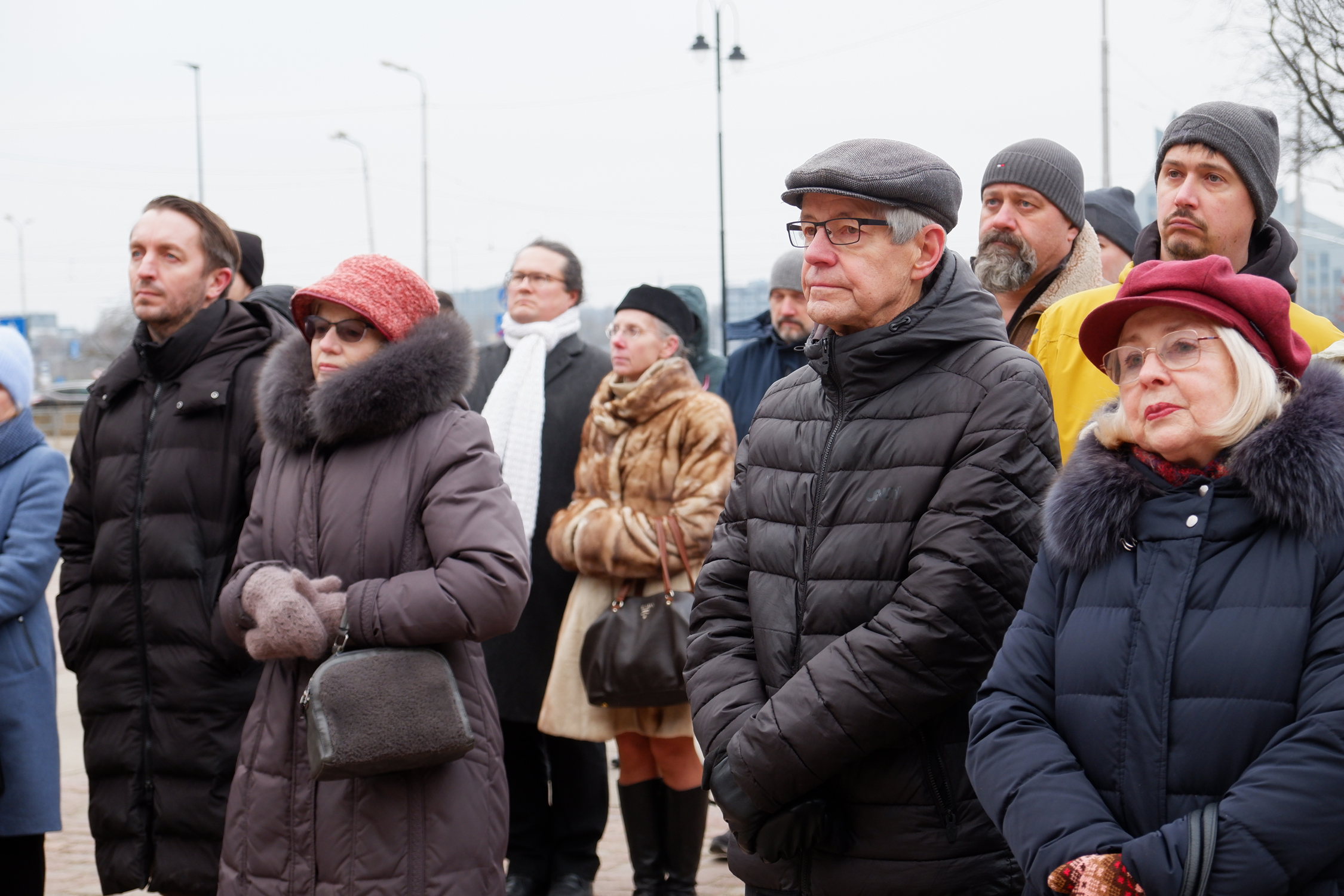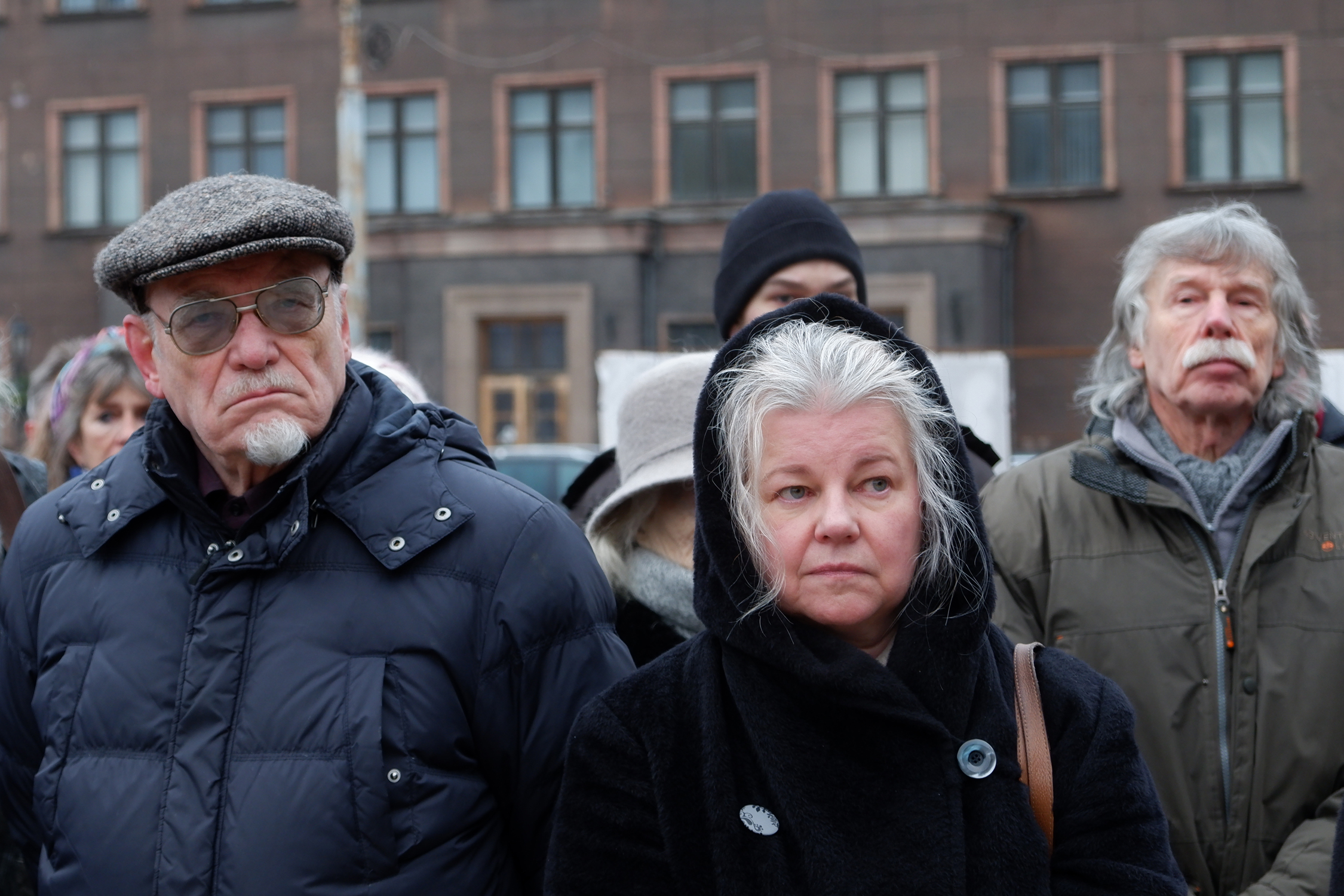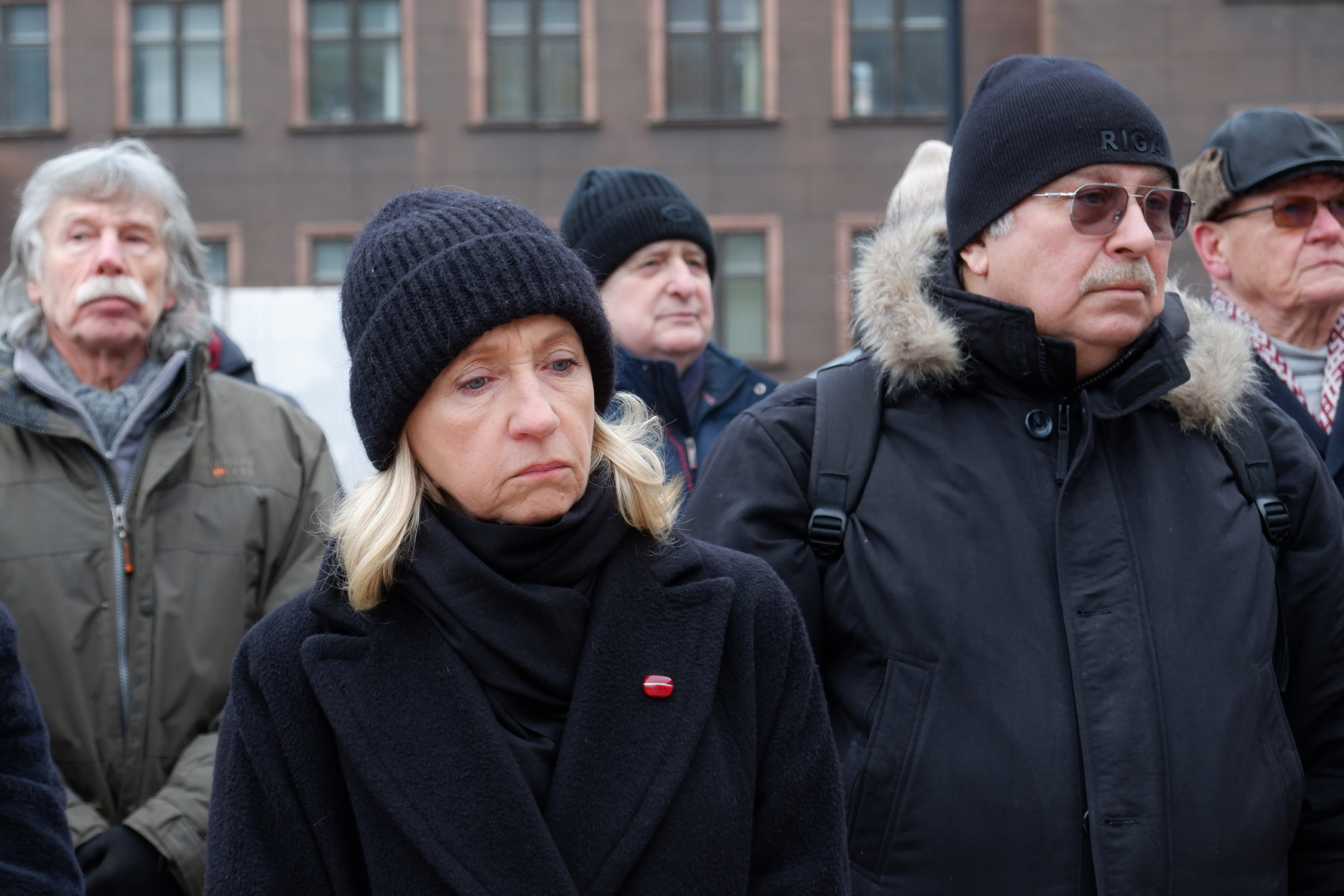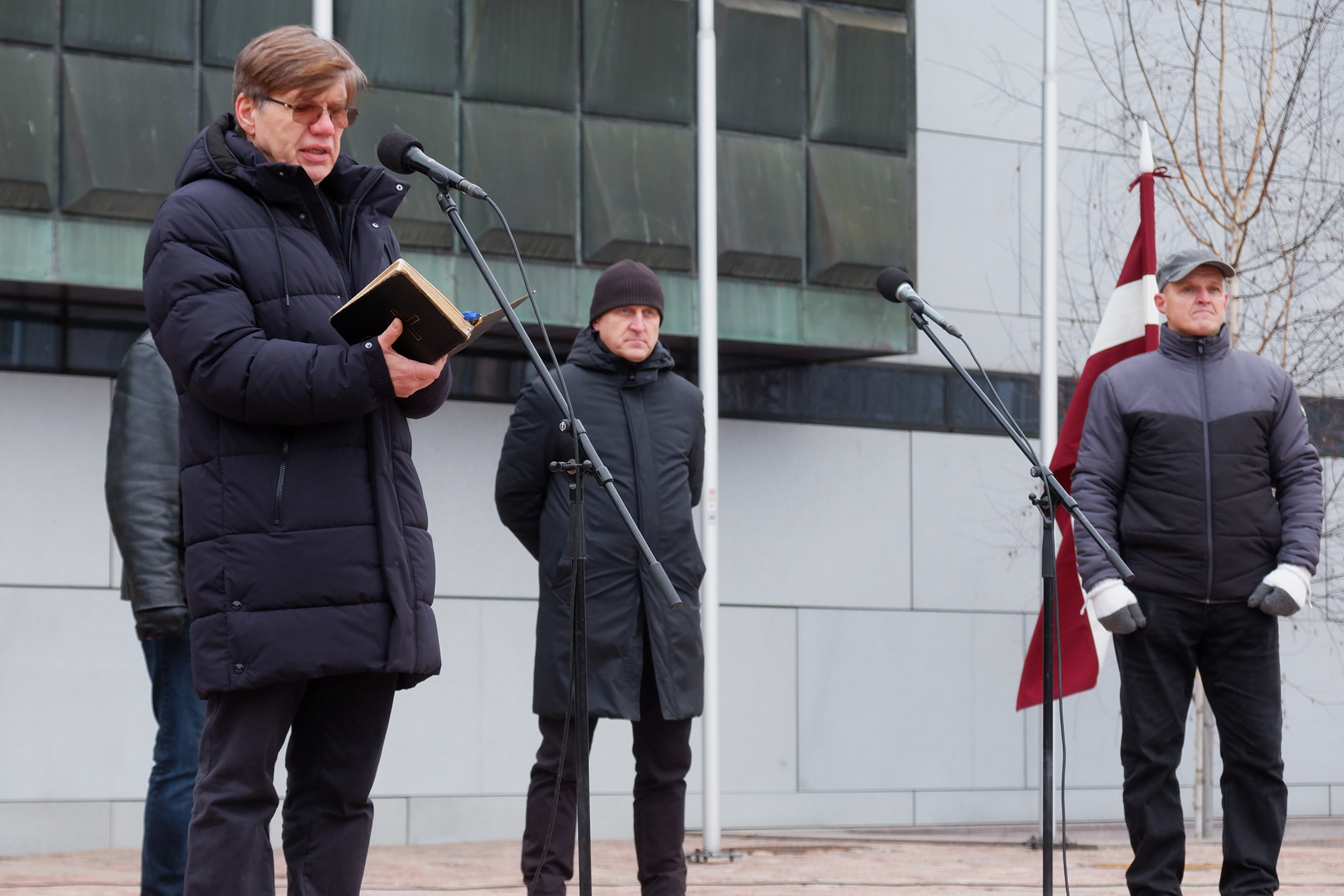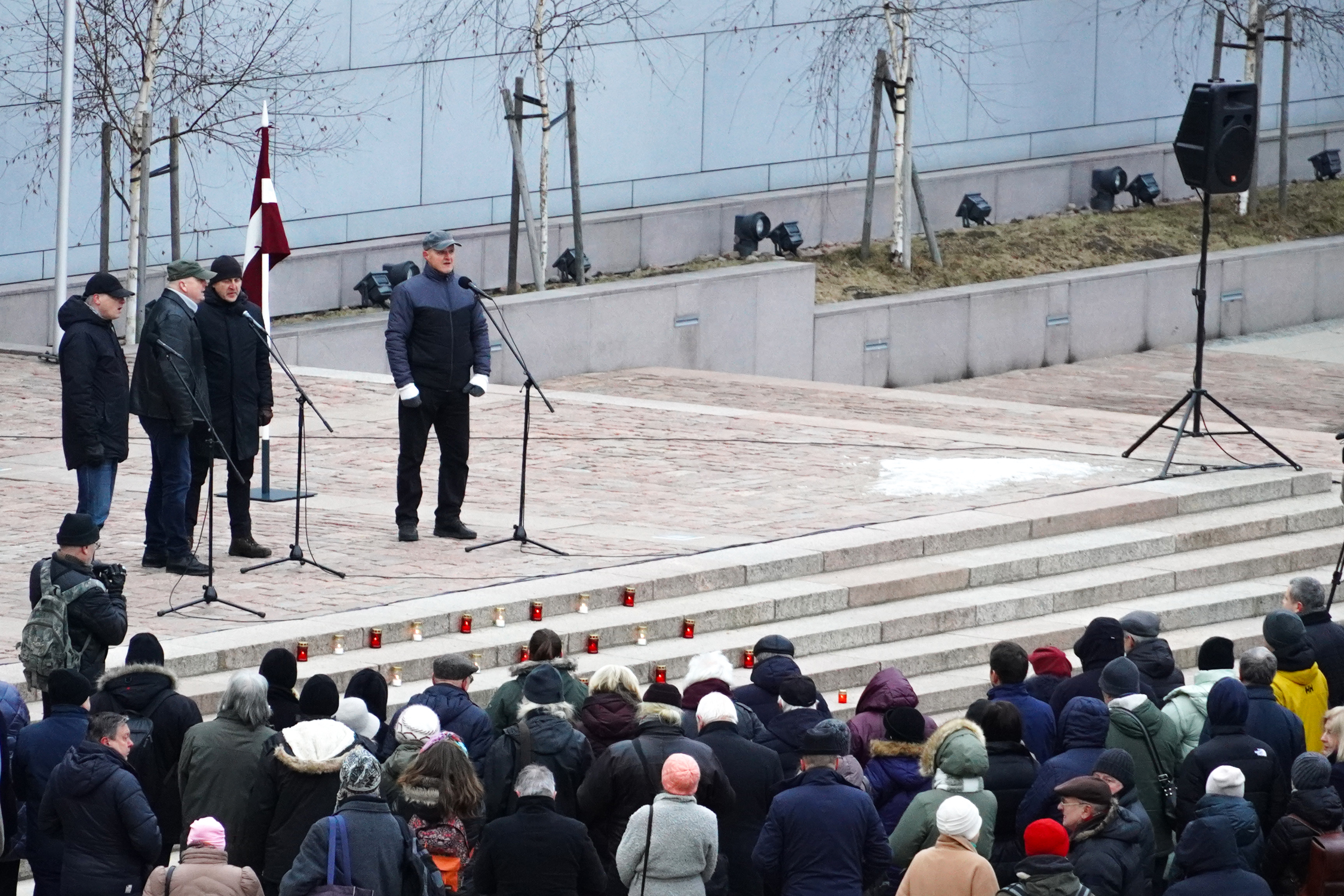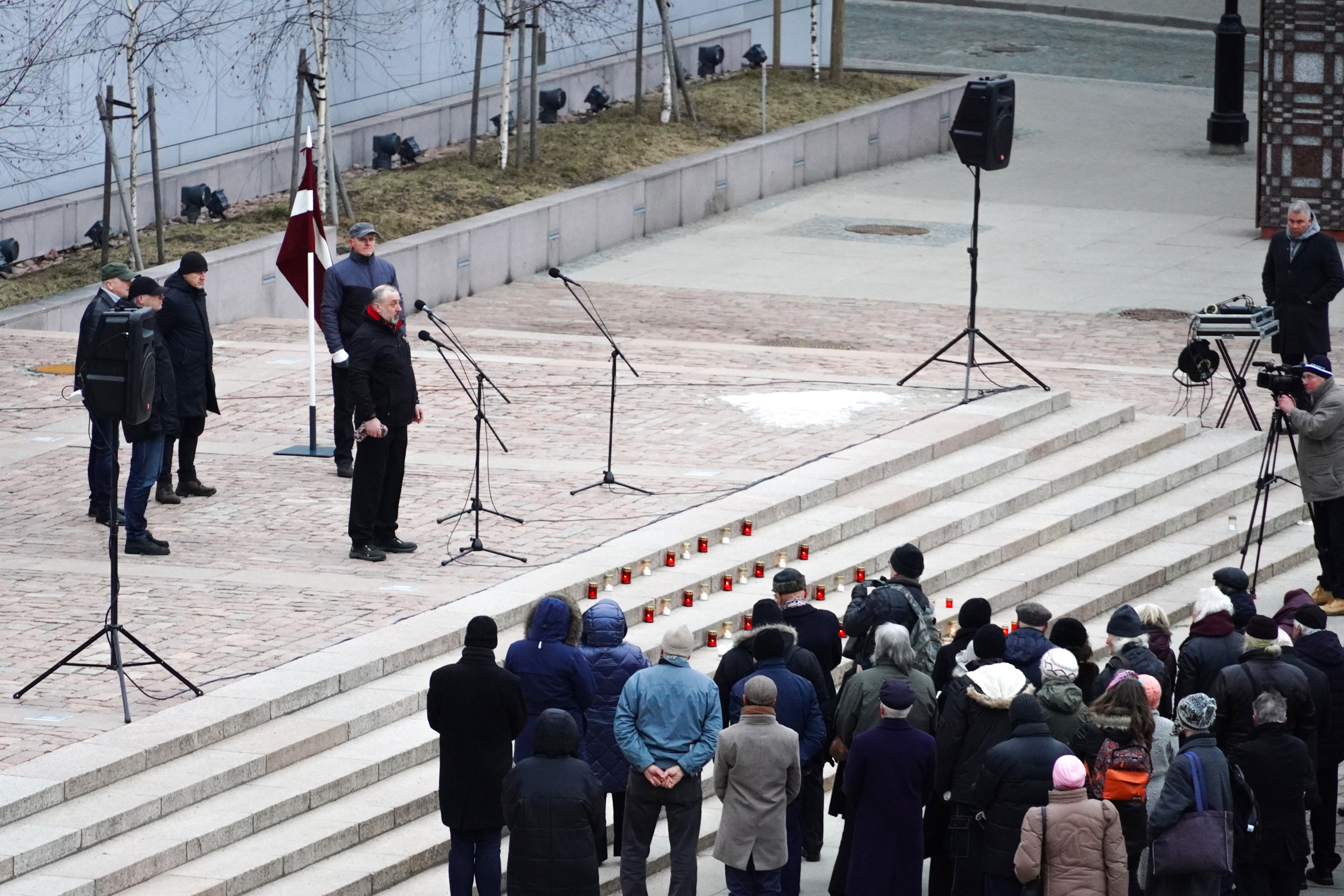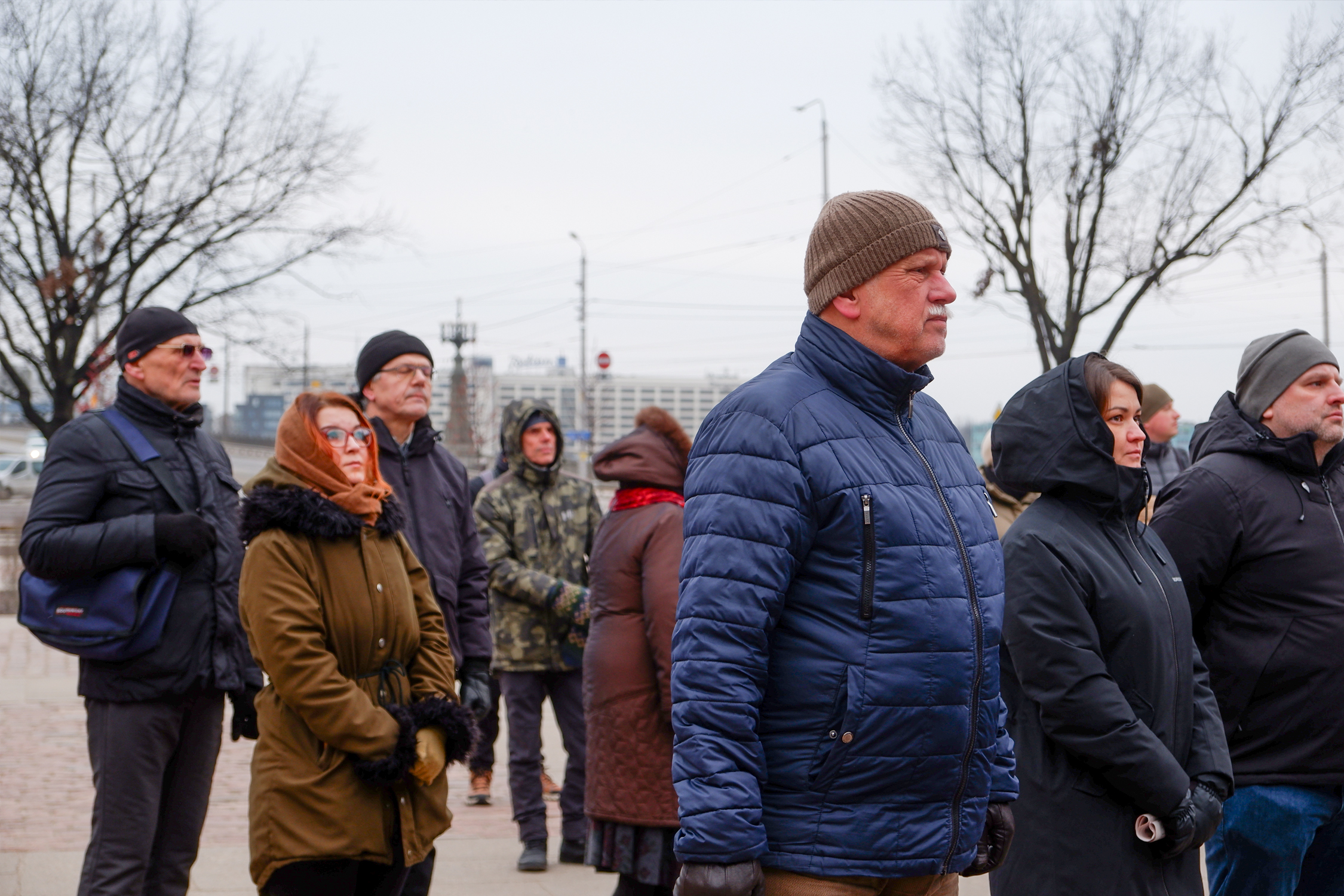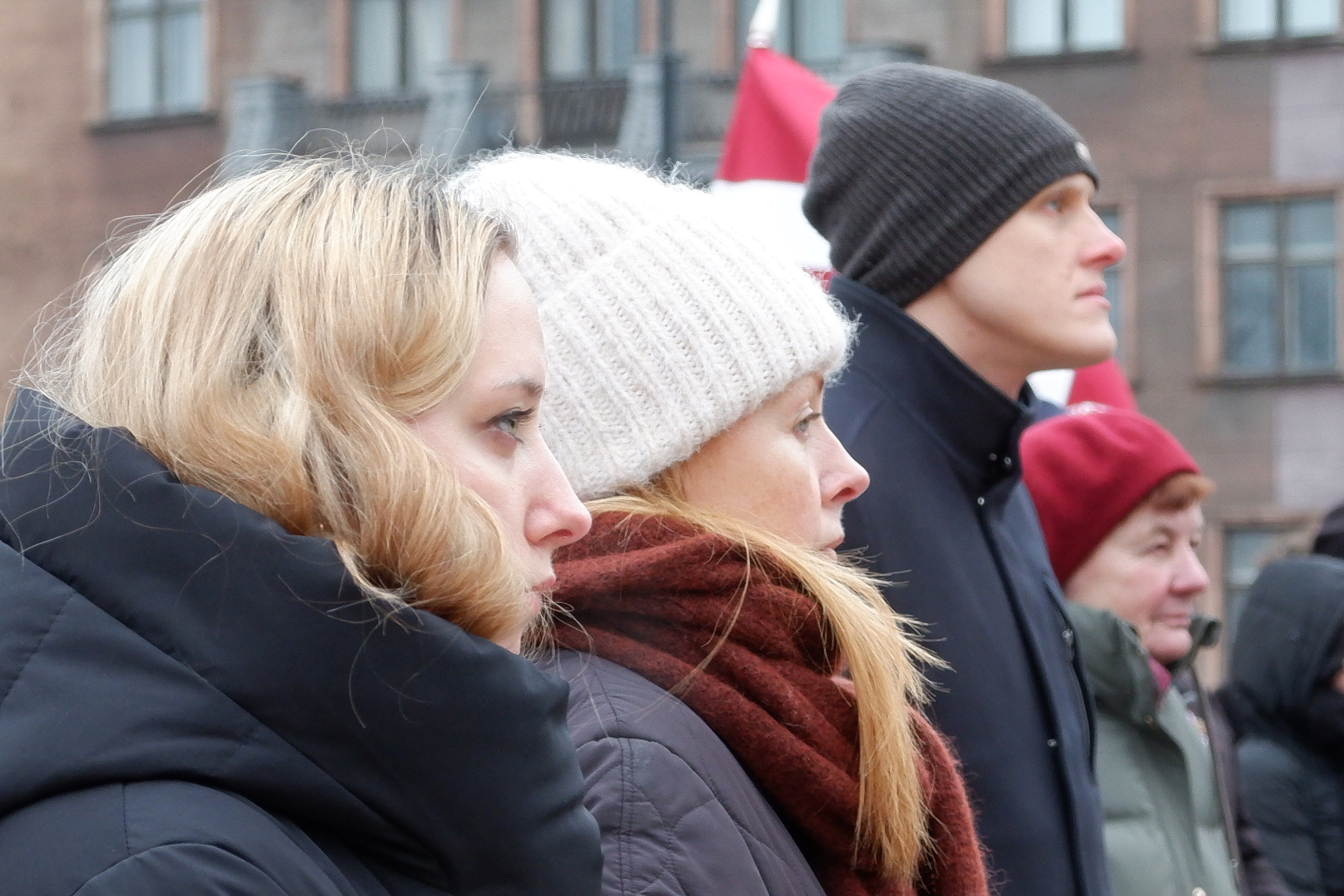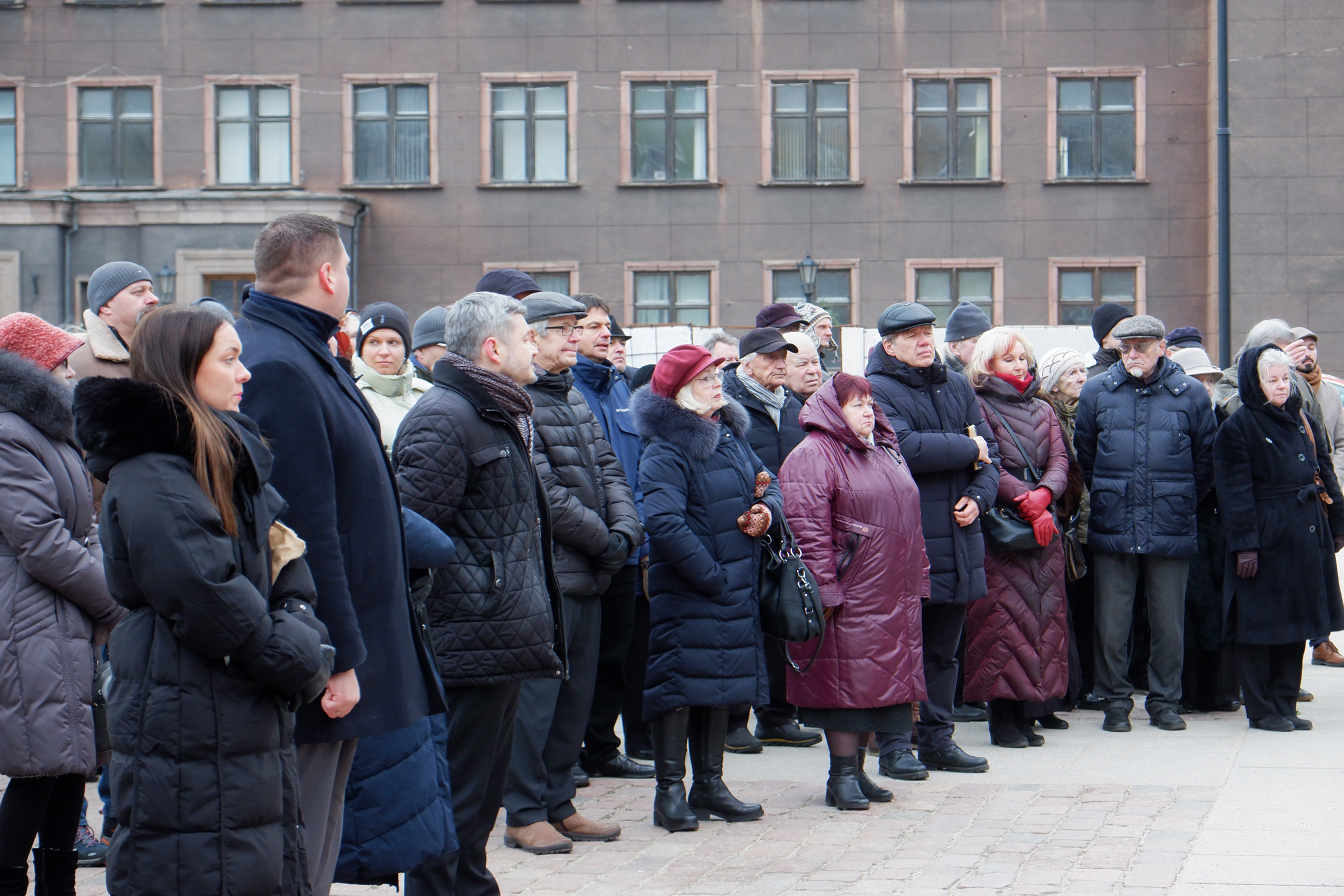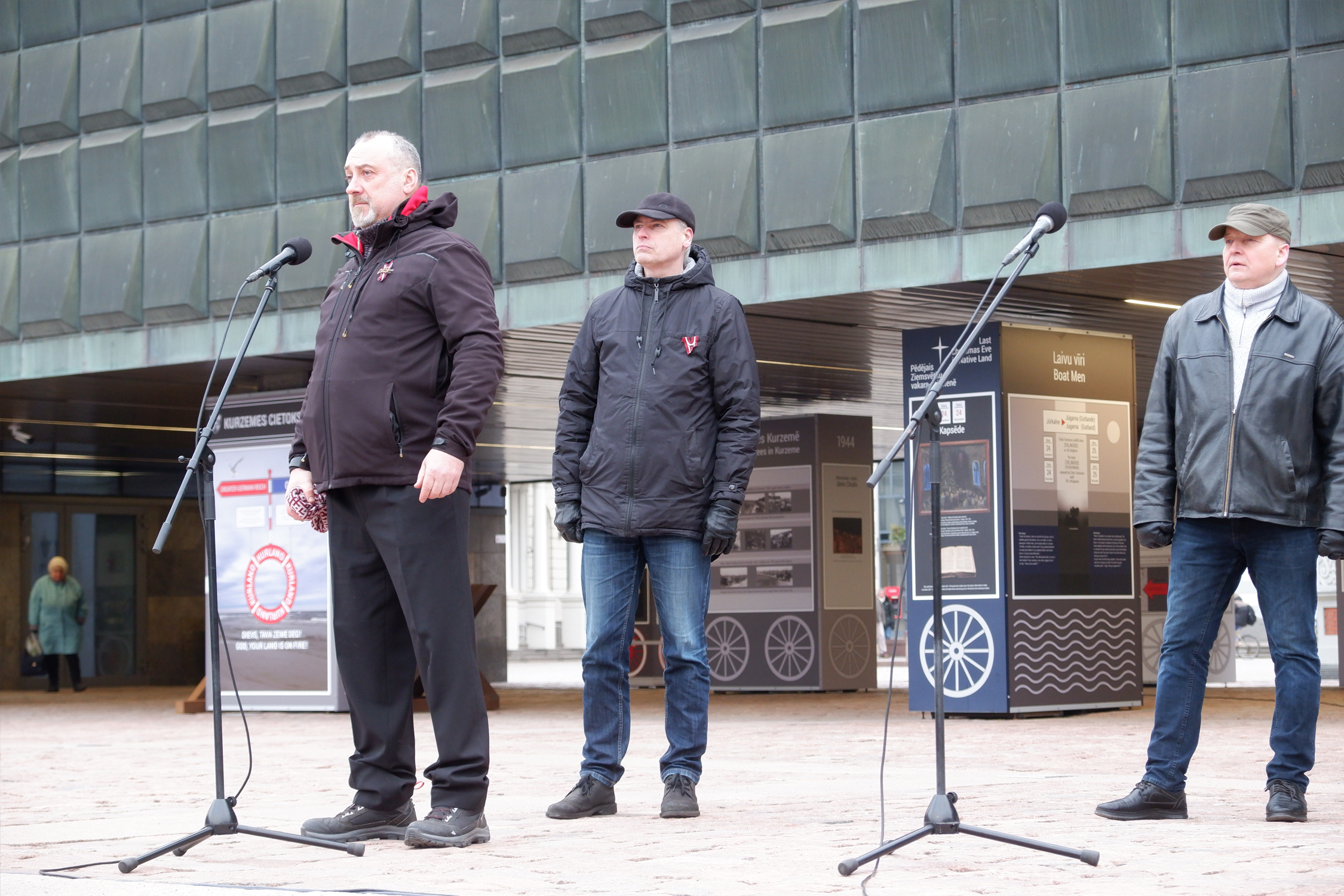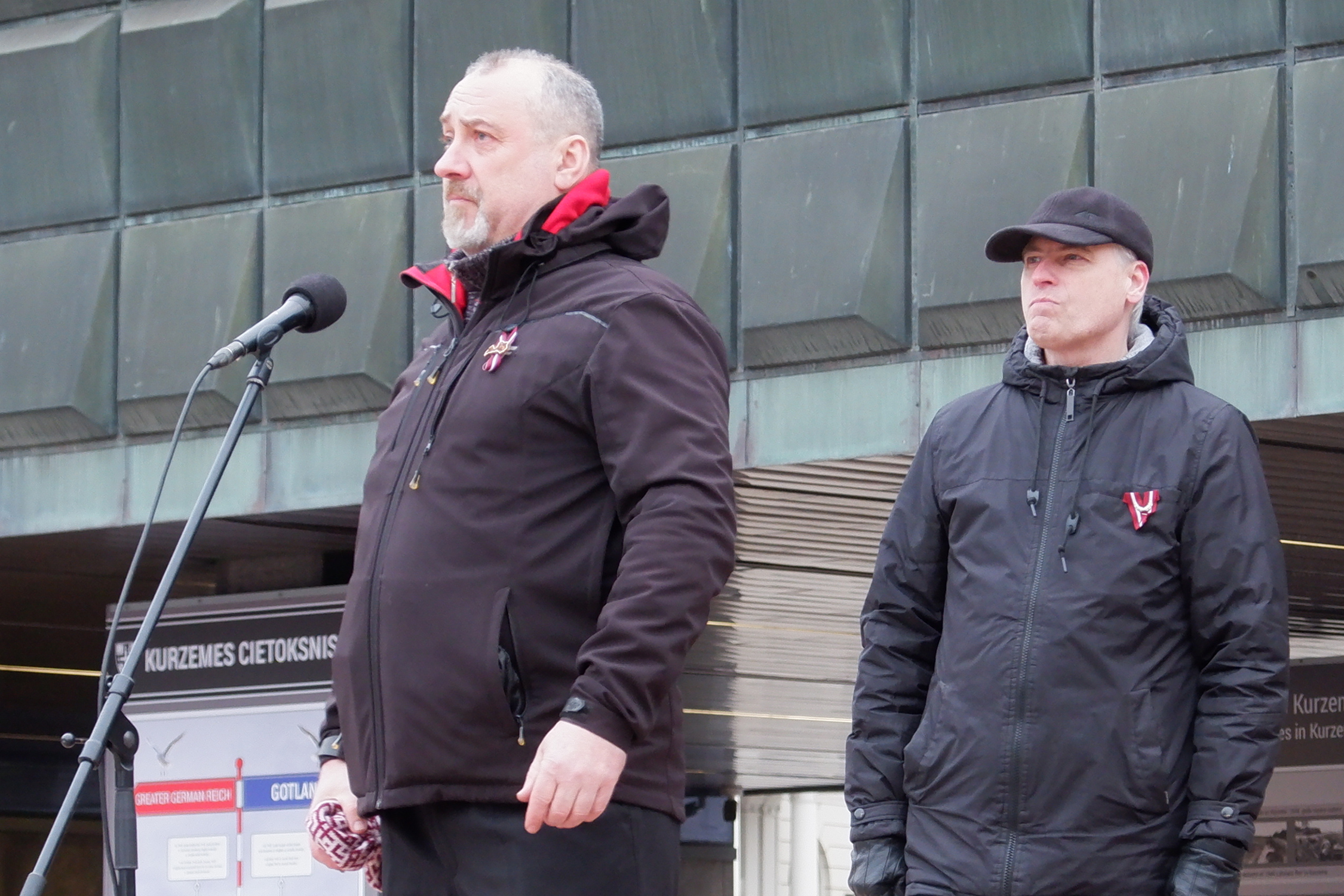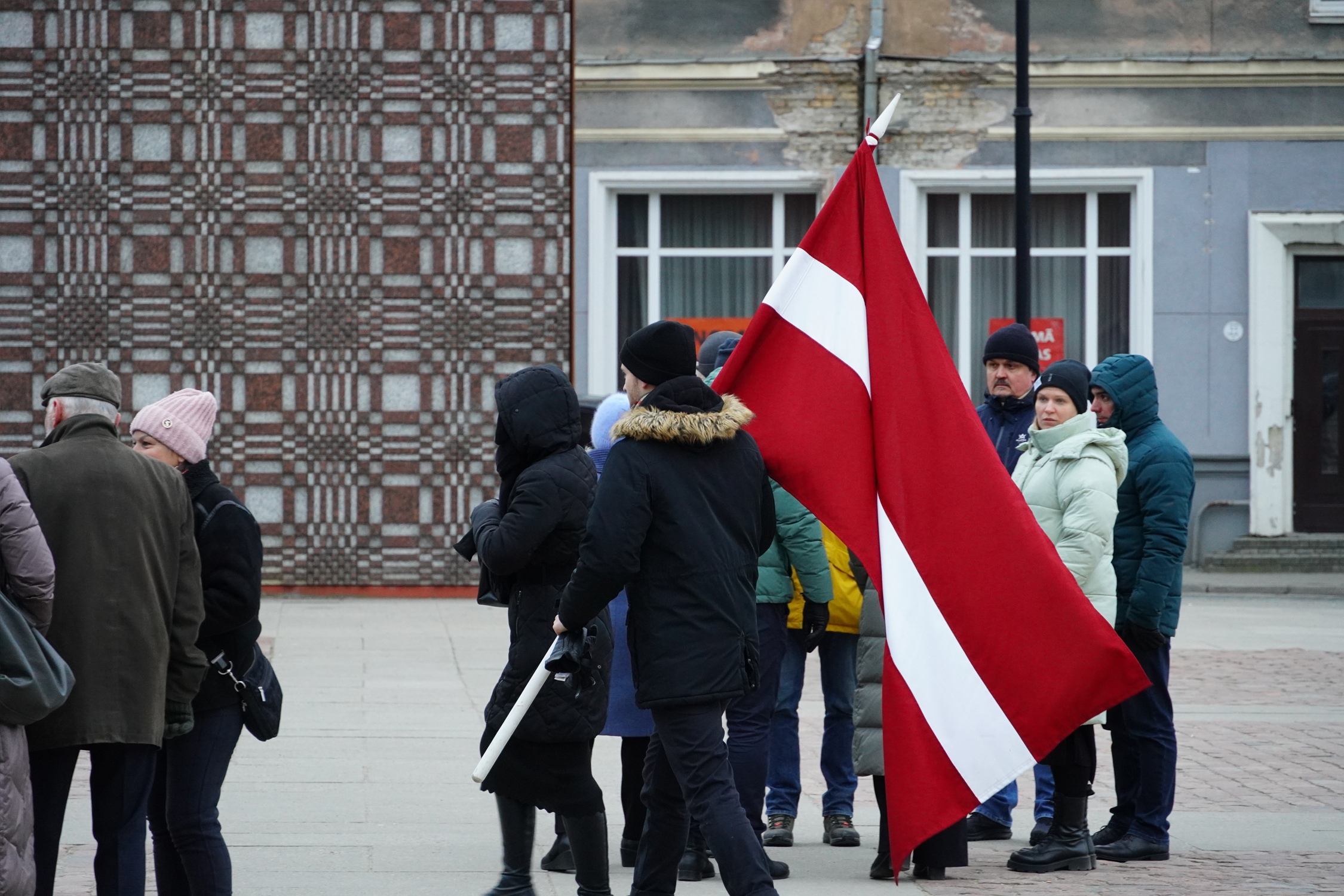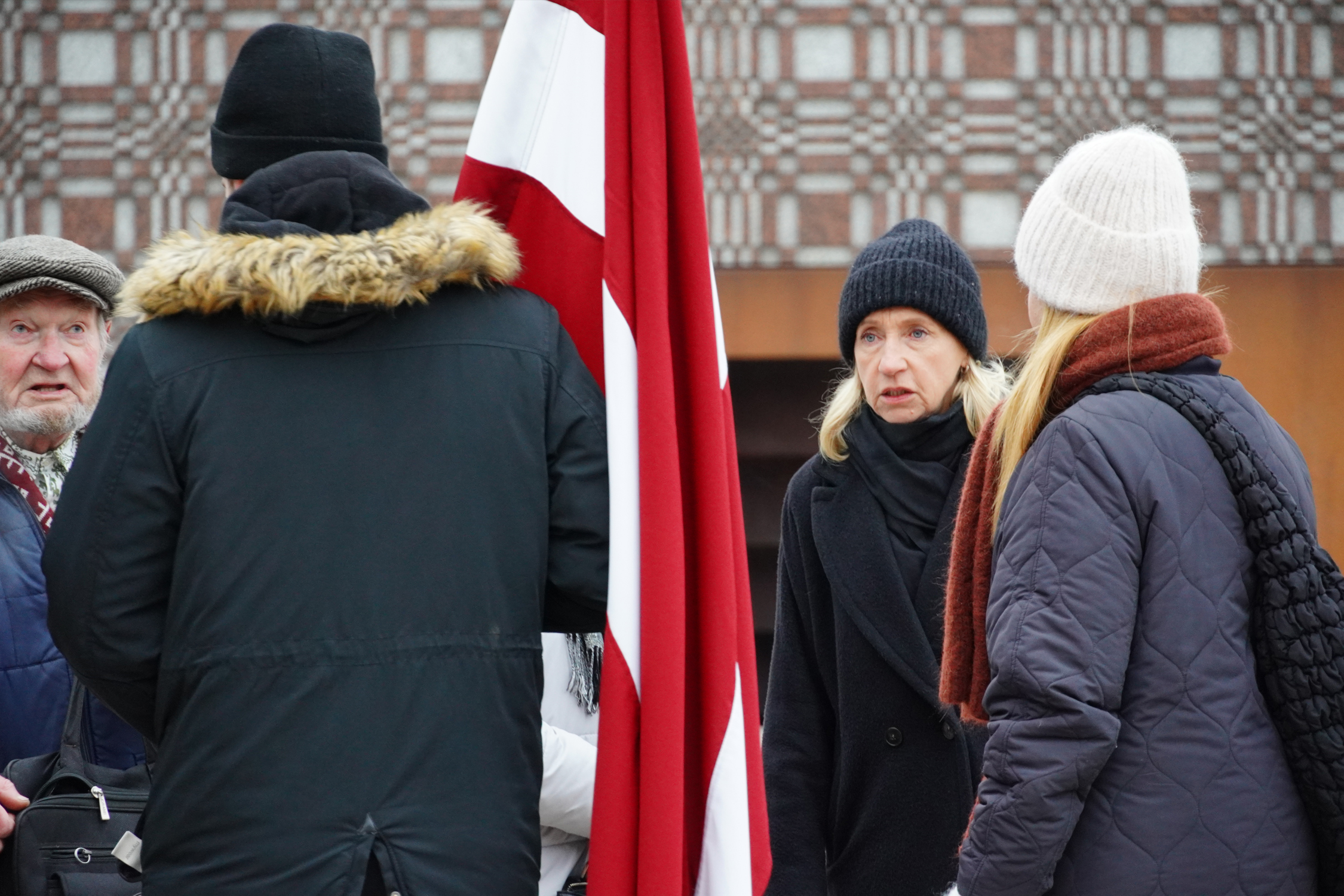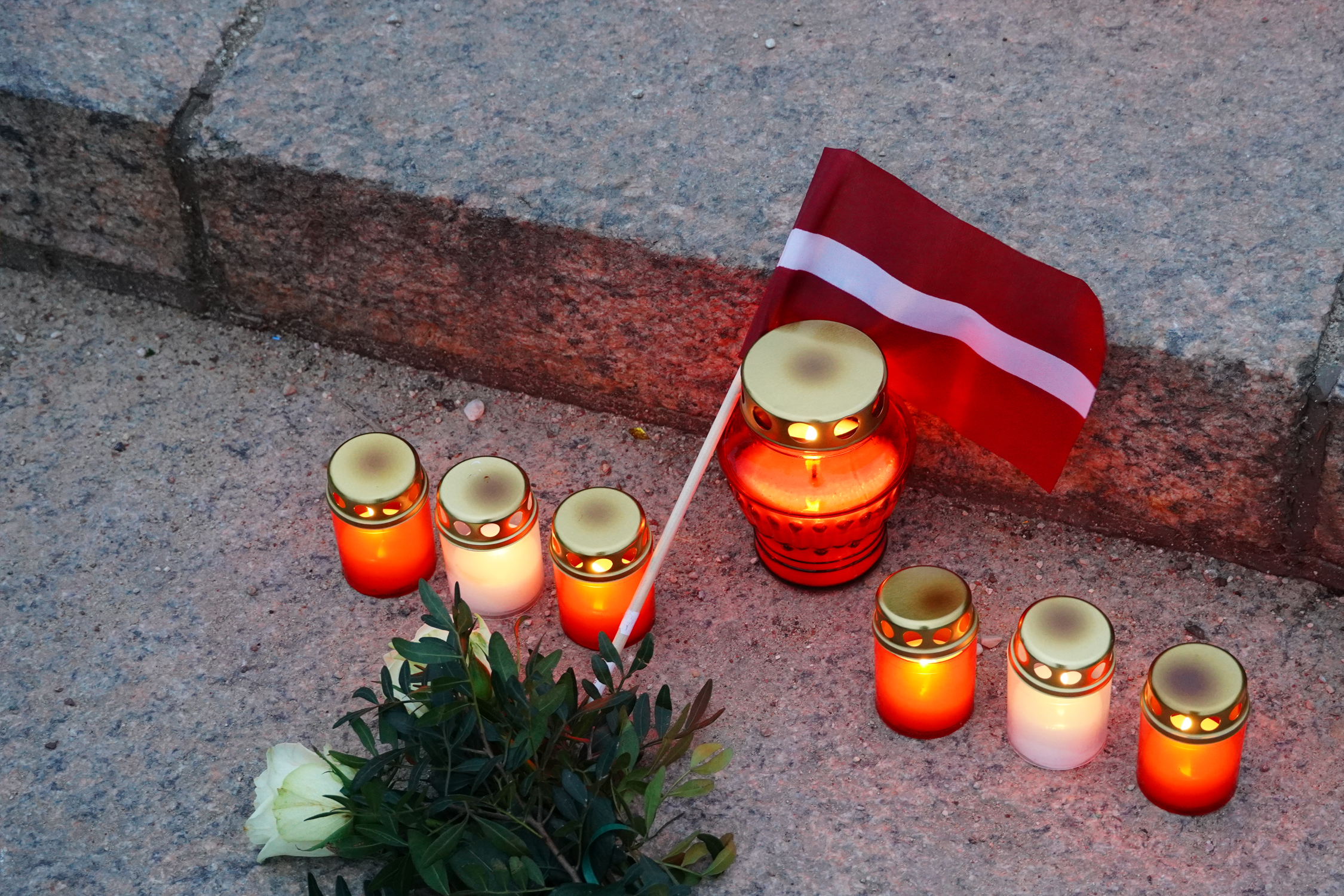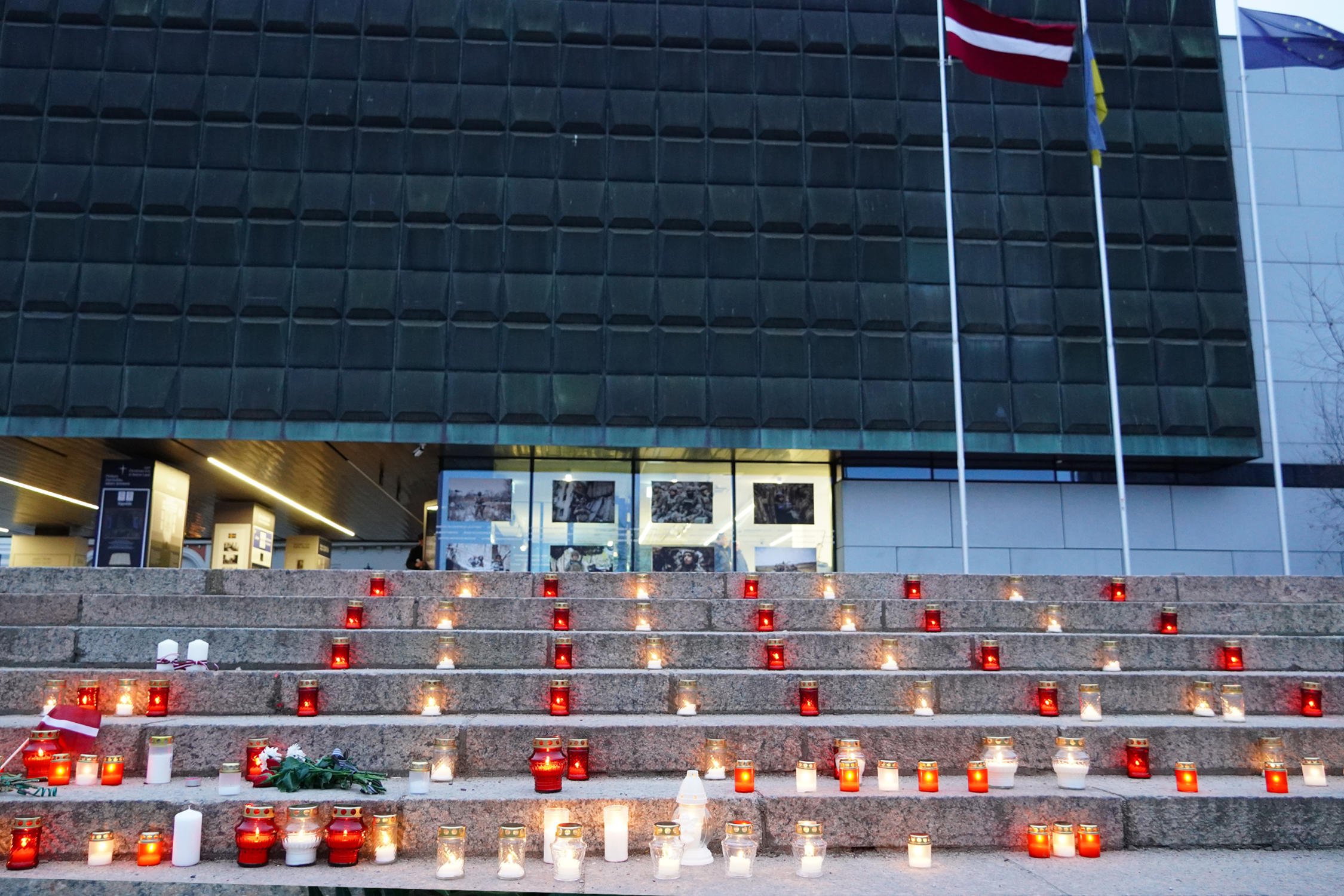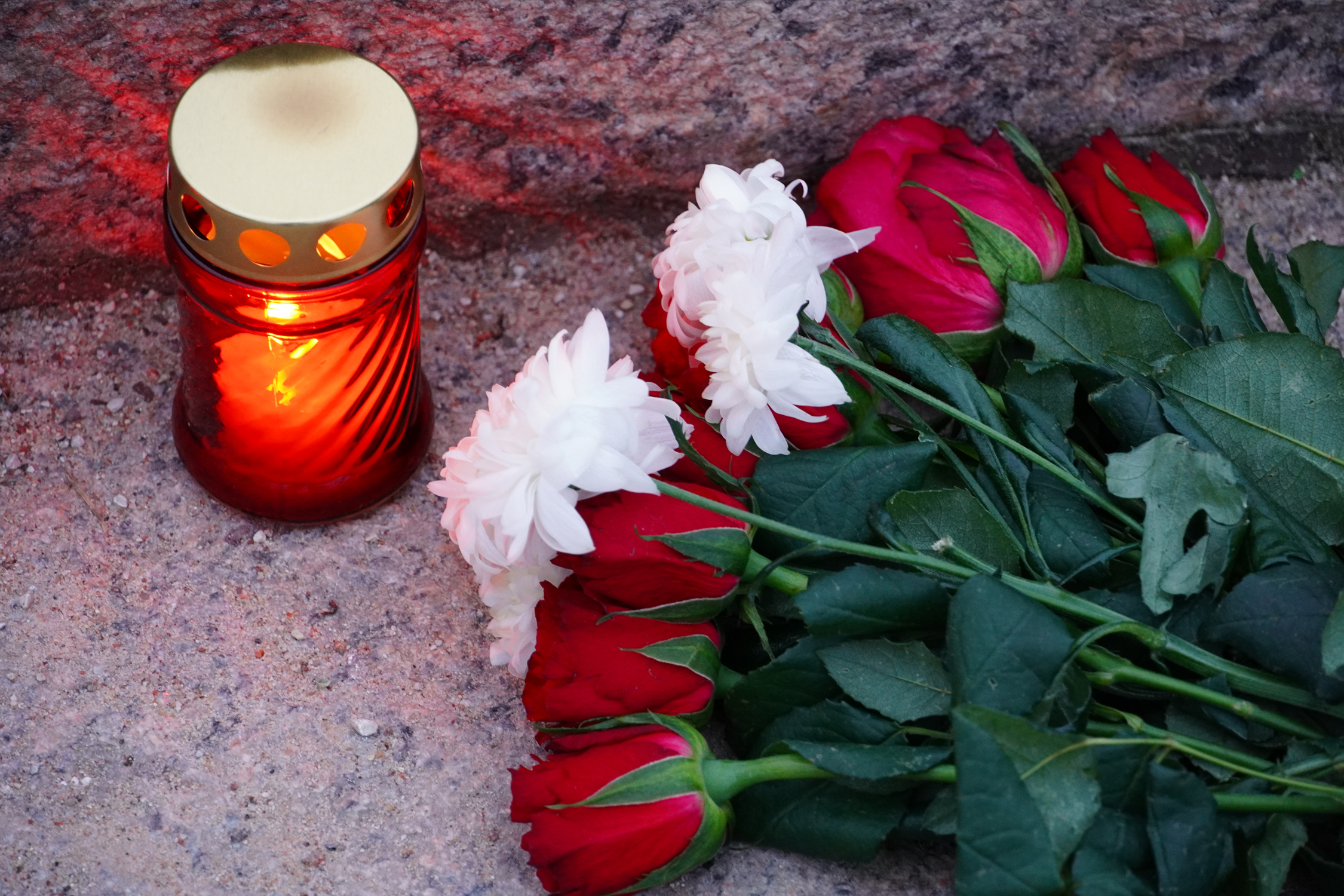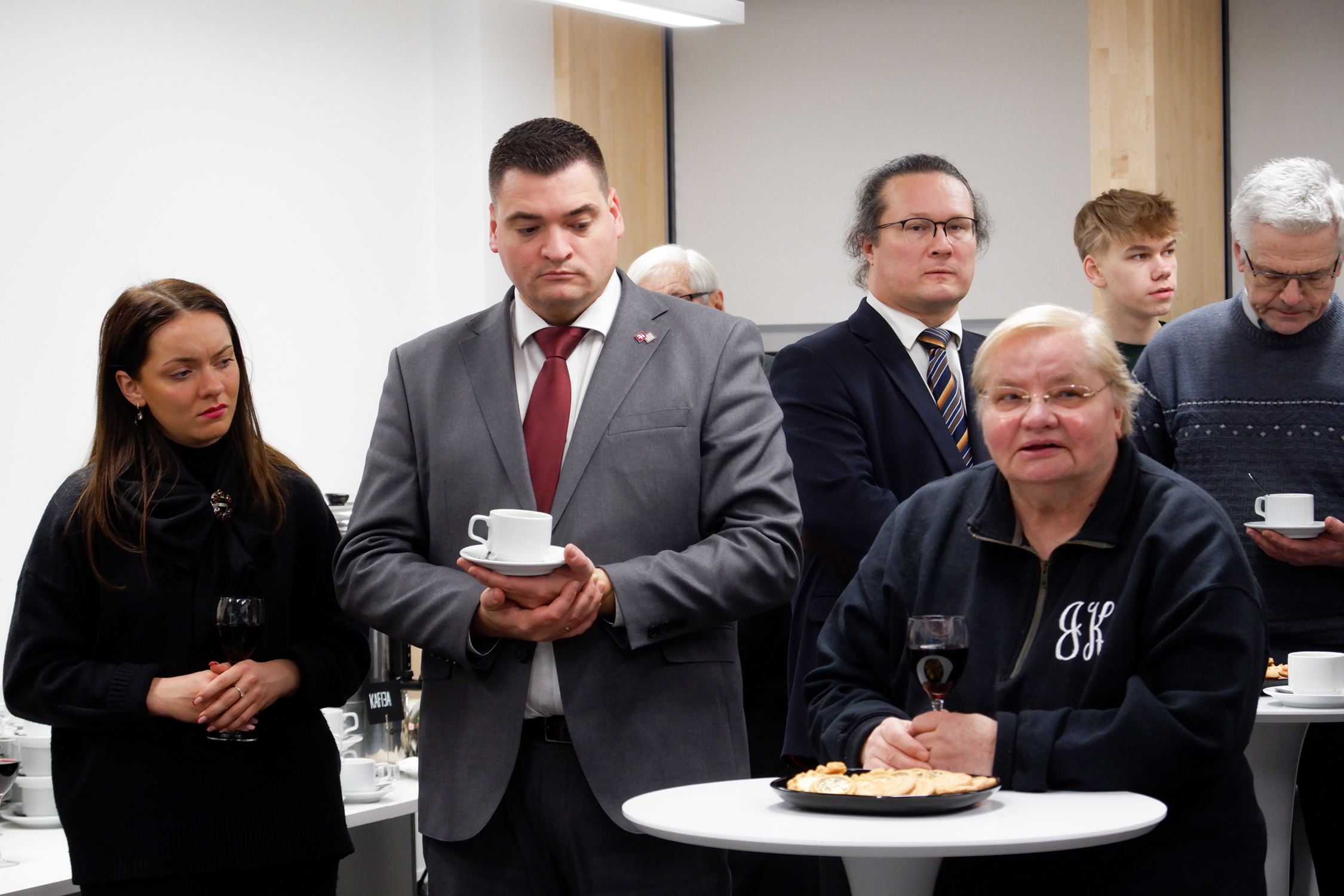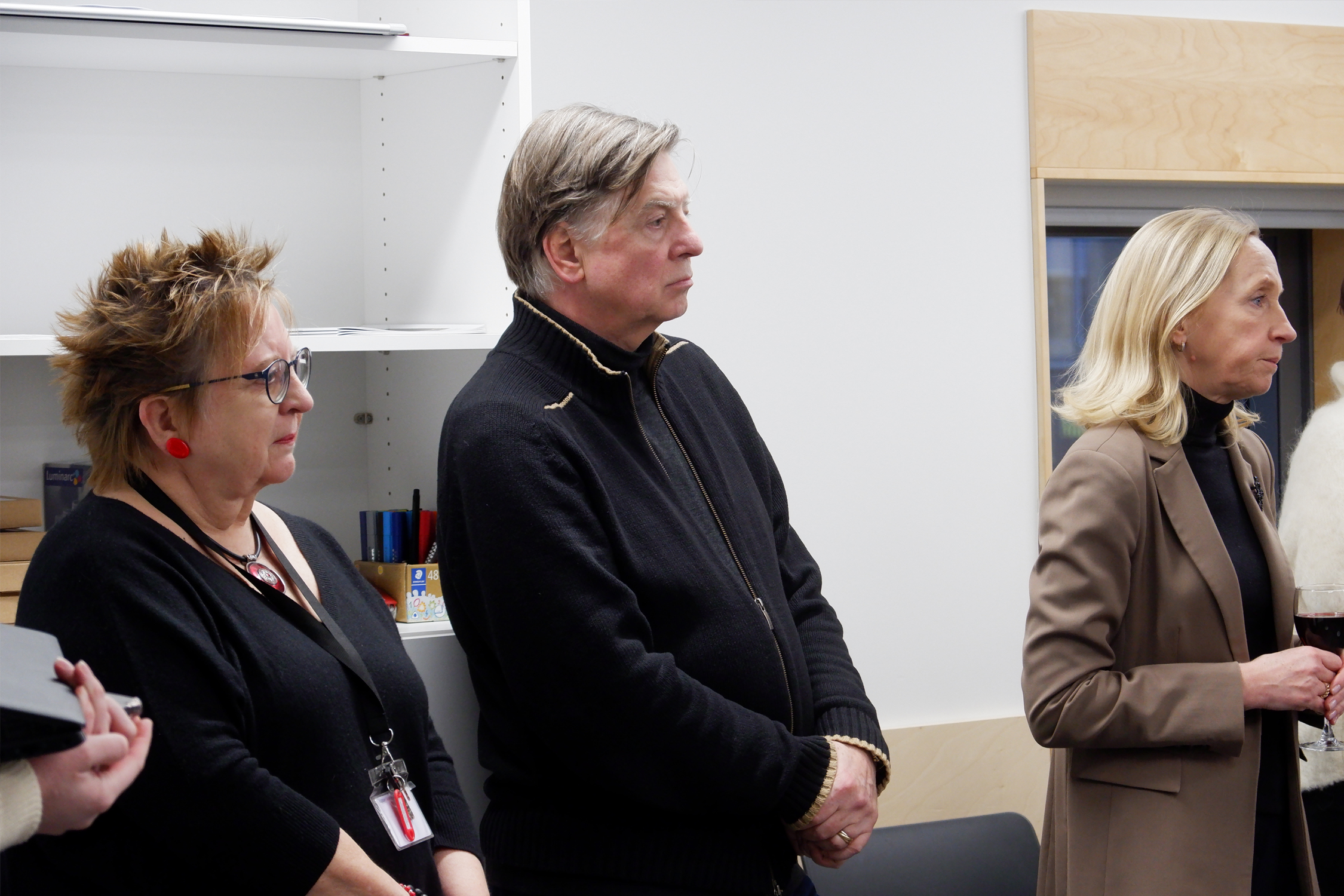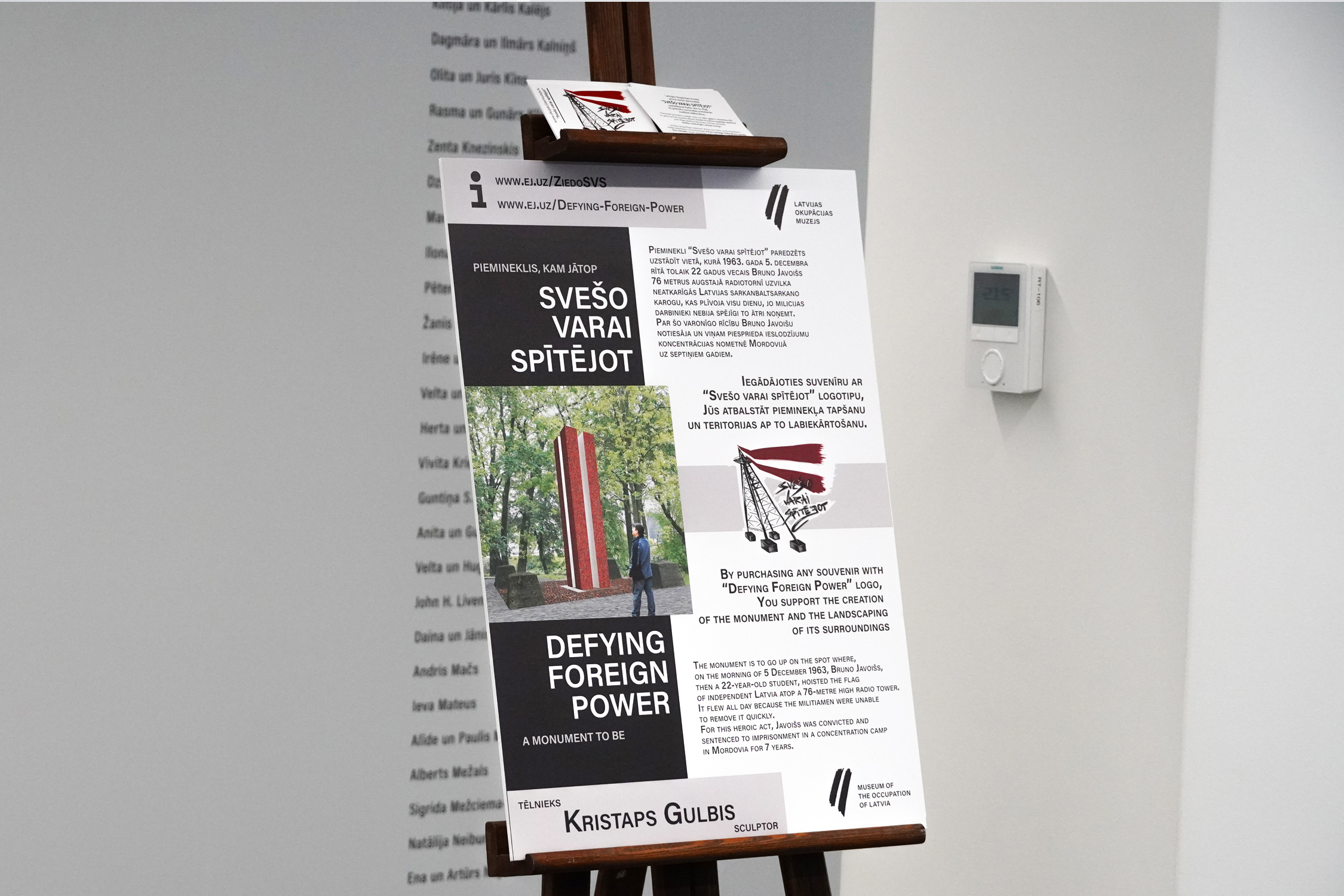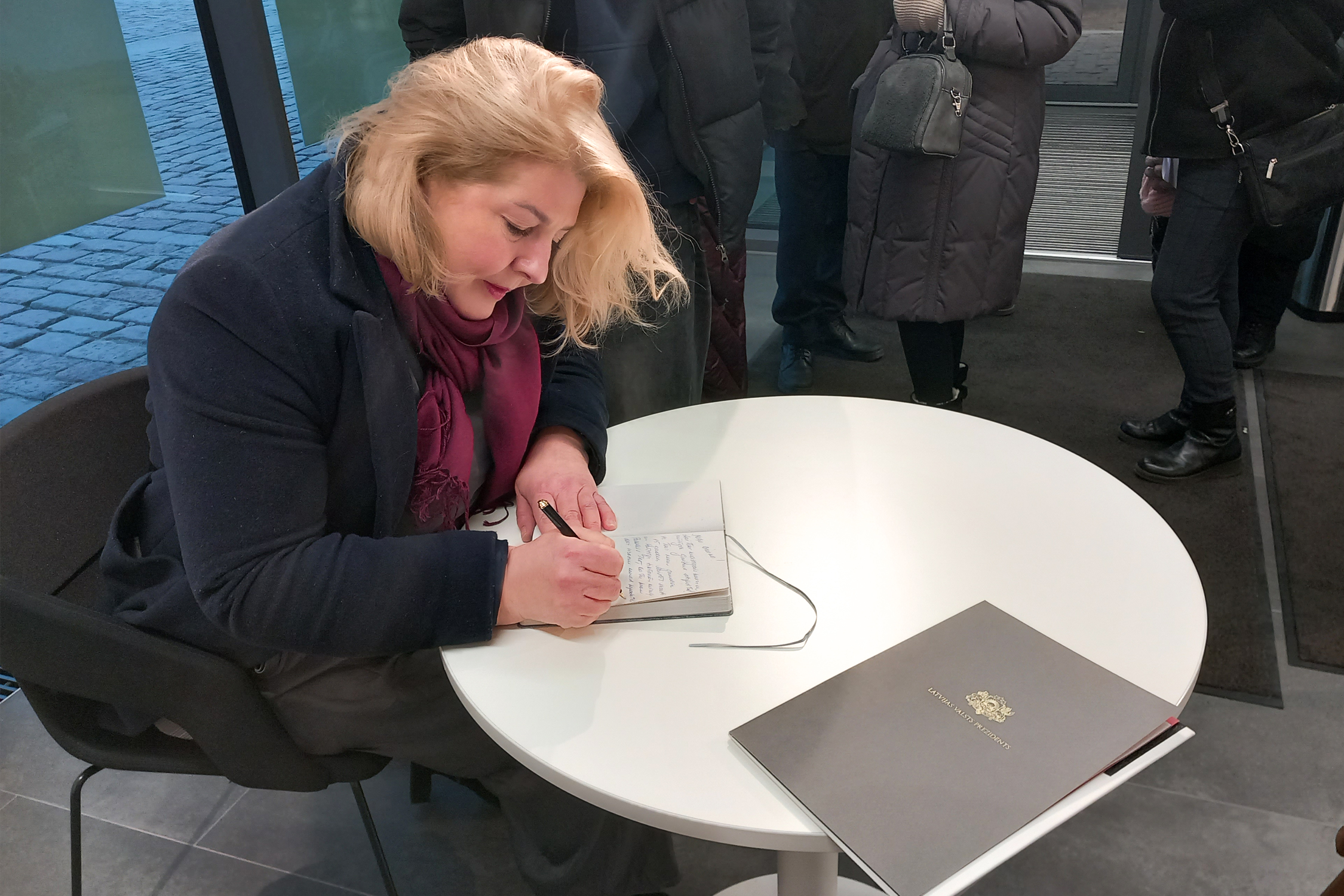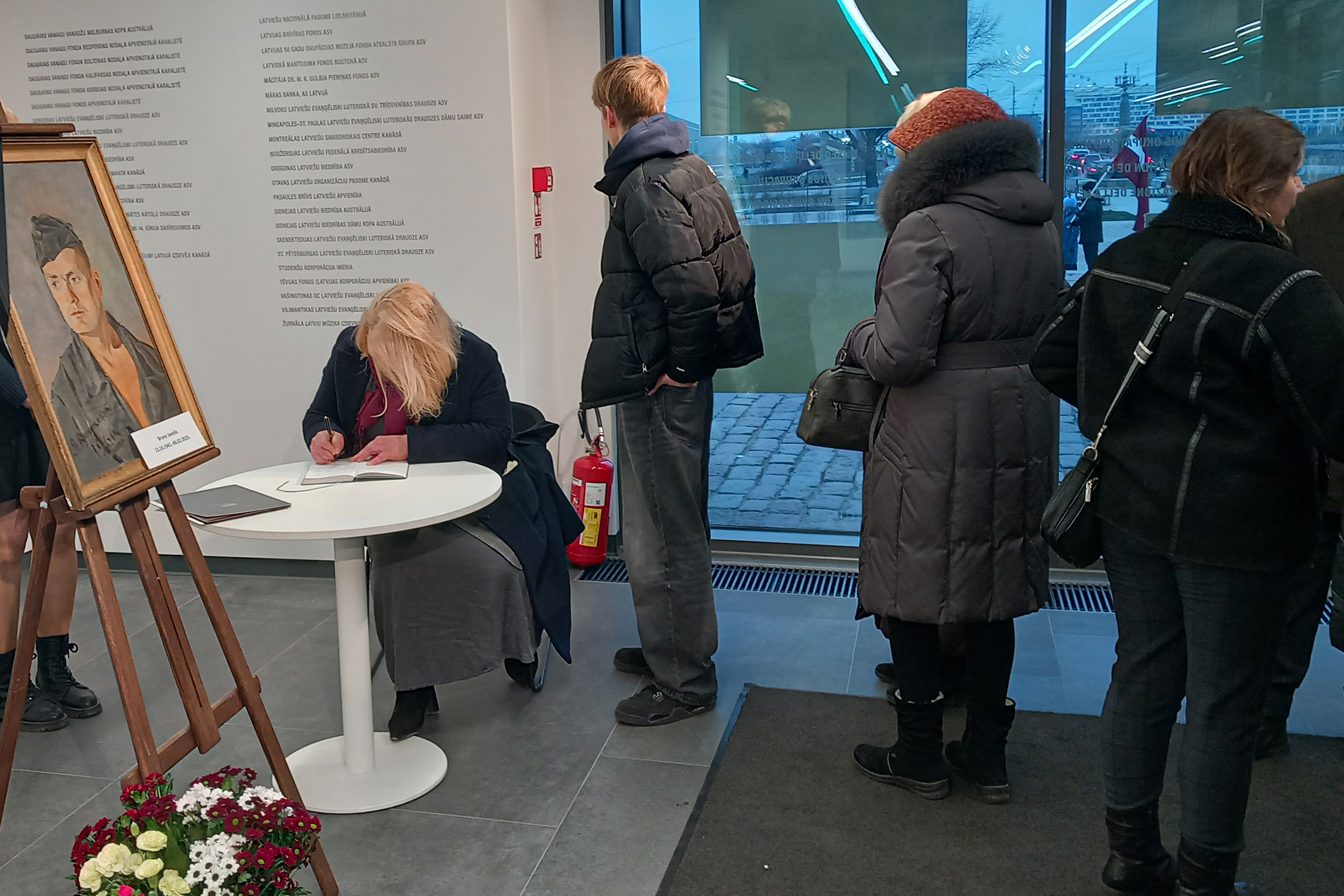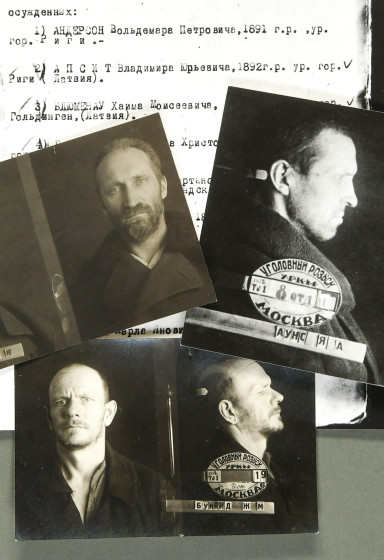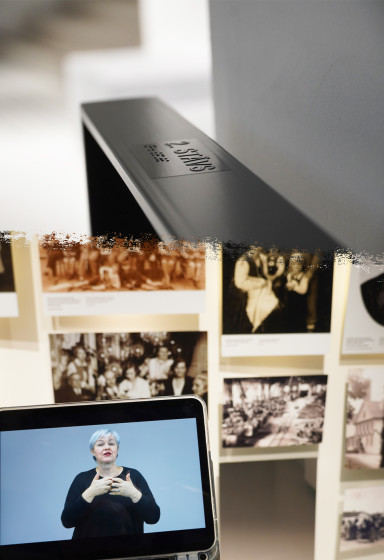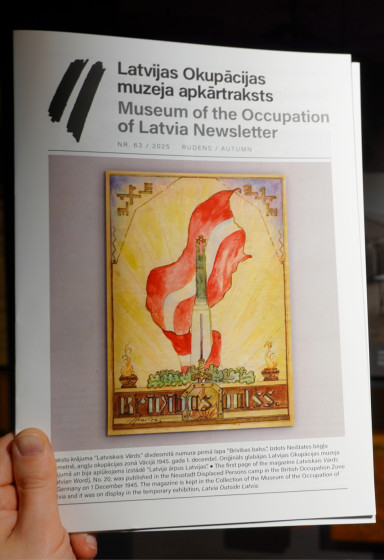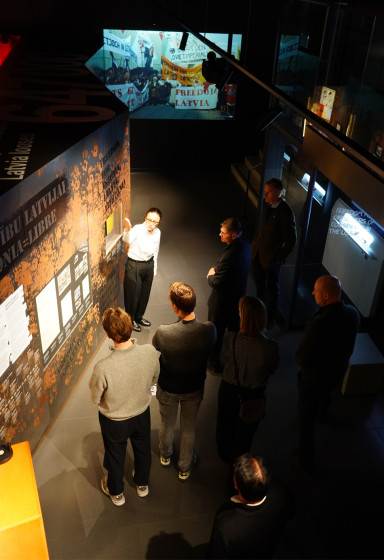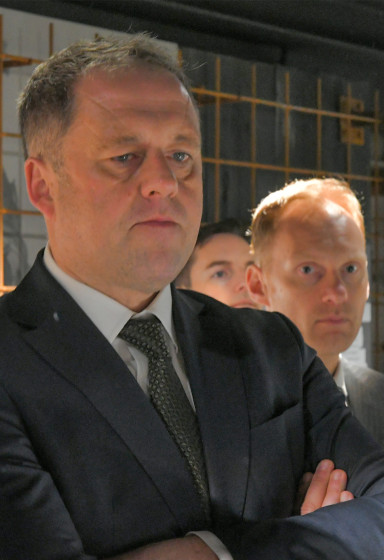Donate to Museum
Each donation helps to ensure the Museum's activities, allowing it to function and provide information for people from all over the world.
The Museum is grateful to each donor and invites everyone to contribute.
Commemorating Bruno
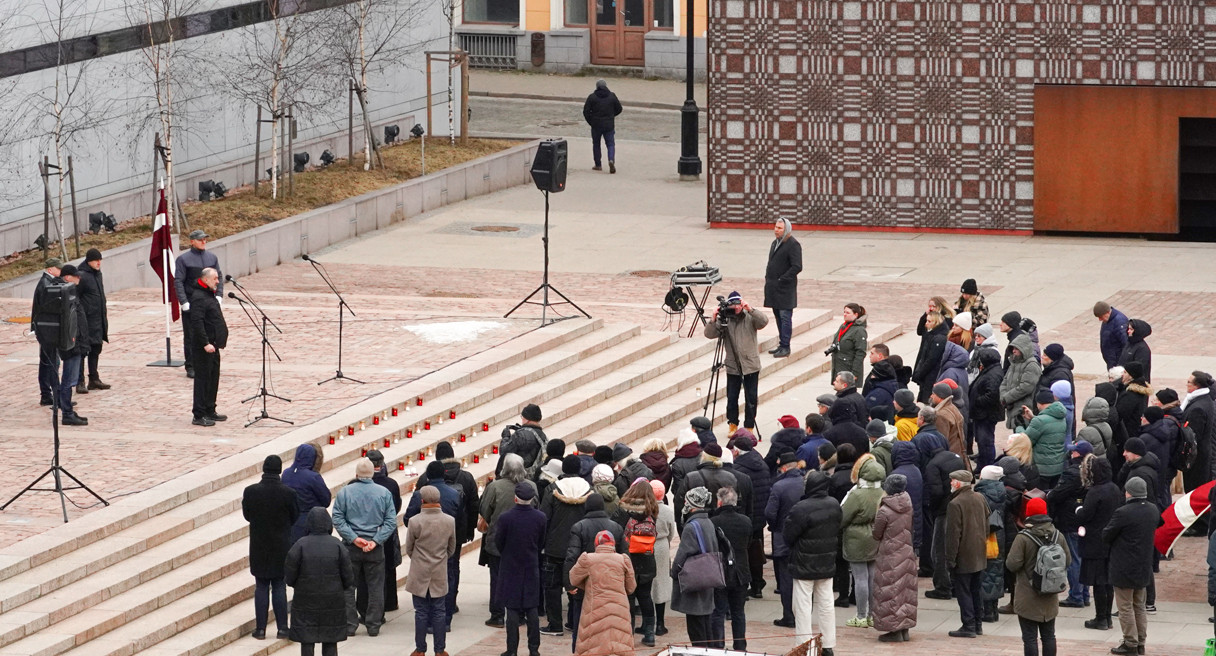
At 16:00 on February 11, several dozen people gathered at Latviešu strēlnieku laukums (Latvian Riflemen's Square in Riga) next to the Museum of the Occupation of Latvia to pay tribute to the Latvian independence fighter Bruno Javoišs, who left this life on February 6.
At exactly four in the afternoon, Bruno Javoišs was also bid farewell in Tartu, Estonia, where he spent his life after returning from imprisonment.
The commemoration began with the words of the President of Latvia, Edgars Rinkēvičs, read by the Director of the Museum, Solvita Vība, followed by a moment of silence.
The audience was touched by the loving memories of Bruno Javoišs’ son Bruno Lielkāja, his friend, Dr. Theol. Guntis Kalme and the Director of the Museum Solvita Vība.
The men's group "Vilki" ("Wolves") sang patriotic songs and candles were lit and placed on the steps next to the Museum.
In the lobby of the Museum, there is a guest book where those who hold the work and personality of Bruno Javoišs close to their hearts can leave a memorial message.
On the morning of 5 December 1963, Bruno Javoišs, a 22-year-old student at the Riga Aviation Institute, hoisted the red-white-red flag of independent Latvia on the 76-meter Riga Radio Tower, directly opposite the city's Main Soviet Militia Administration. Due to the upcoming Soviet occupation holiday – the USSR Constitution Day – the flag of the Latvian SSR was to be hoisted on the tower that day, but Bruno Javoišs changed it to the symbol of independent Latvia. The Latvian flag waved all day and was seen by many. Militia workers were unable to quickly climb the icy radio tower. For this heroic act, Bruno Javoišs was convicted and sentenced to seven years’ imprisonment in a hard labour camp in the Mordovian ASSR.
